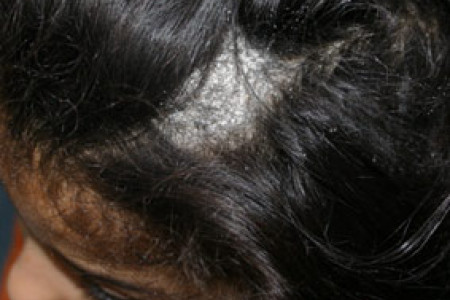Tinea versicolor dark spots. Tinea Versicolor: Causes, Symptoms, and Effective Treatments for Fungal Skin Infection
What is tinea versicolor and how does it affect the skin. What are the common symptoms of tinea versicolor. How is tinea versicolor diagnosed and treated. Can tinea versicolor be prevented or managed through lifestyle changes.
Understanding Tinea Versicolor: A Common Fungal Skin Condition
Tinea versicolor, also known as pityriasis versicolor, is a fungal infection that affects the skin, causing small patches of discolored spots. This condition results from an overgrowth of Malassezia, a type of yeast that naturally resides on human skin. When this yeast proliferates beyond normal levels, it leads to the characteristic rash associated with tinea versicolor.
Despite its fungal nature, tinea versicolor is not contagious. It can affect individuals of any skin color, but it is more commonly observed in teens and young adults. For some, the condition may cause emotional distress and self-consciousness due to its visible nature.
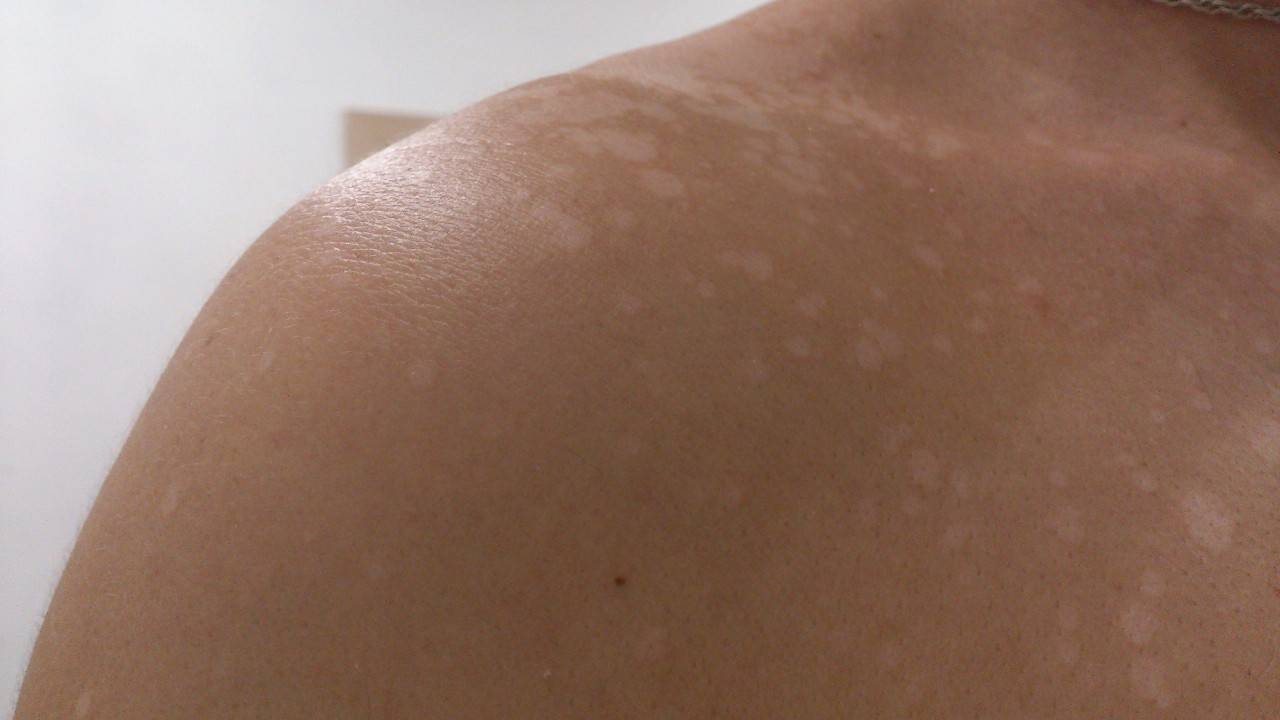
Recognizing the Signs and Symptoms of Tinea Versicolor
The primary sign of tinea versicolor is the appearance of discolored patches on the skin. These patches can vary in color and may be:
- White
- Pink
- Red
- Brown
The spots may be lighter or darker than the surrounding skin and often become more pronounced when exposed to sunlight. This is because the affected areas do not tan in the same way as healthy skin.
Where does tinea versicolor typically appear on the body? While it can occur anywhere, the most common locations include:
- Neck
- Chest
- Back
- Arms
In addition to discoloration, the affected areas may be dry and scaly. Some individuals may experience mild itching or discomfort, although this is relatively rare.
Factors Contributing to Tinea Versicolor Development
Several factors can trigger an overgrowth of Malassezia yeast, leading to tinea versicolor:
- Oily skin
- Hot and humid climates
- Excessive sweating
- Hormonal changes
- Weakened immune system
Why does tinea versicolor often worsen in warm weather? The Malassezia yeast thrives in warm, moist environments. Consequently, symptoms may become more pronounced during summer months or in tropical climates. Conversely, the condition may improve or seem to disappear during cooler seasons.

Diagnosing Tinea Versicolor: Methods and Differential Diagnosis
Dermatologists can often diagnose tinea versicolor based on the characteristic appearance of the rash. However, in some cases, additional tests may be necessary to confirm the diagnosis:
Wood’s Lamp Examination
This test involves using ultraviolet light to examine the affected skin. Under this light, areas affected by tinea versicolor may appear as a fluorescent coppery-orange color.
Potassium Hydroxide (KOH) Microscopy
In this procedure, skin cells are removed from the affected area and treated with potassium hydroxide. The sample is then examined under a microscope to identify the presence of Malassezia yeast.
Skin Biopsy
A small sample of skin is scraped from the affected area and examined under a microscope. For children, a less invasive method using clear tape may be employed to collect skin cells.
How do doctors differentiate tinea versicolor from similar conditions? Some skin conditions, such as vitiligo and pityriasis rosea, may present with symptoms resembling tinea versicolor. However, these conditions have distinct features that allow experienced dermatologists to distinguish them, including differences in texture and rash patterns.

Effective Treatment Options for Tinea Versicolor
The treatment approach for tinea versicolor depends on factors such as the size, location, and severity of the affected area. Common treatment options include:
Topical Antifungal Medications
These are applied directly to the skin and are available in various forms:
- Lotions
- Shampoos
- Creams
- Foams
- Soaps
Over-the-counter antifungal products containing ingredients such as clotrimazole, ketoconazole, miconazole, zinc pyrithione, selenium sulfide, or terbinafine are often effective. In some cases, prescription-strength topical medications may be necessary.
Oral Antifungal Medications
For more severe or recurrent cases of tinea versicolor, oral antifungal medications may be prescribed. These systemic treatments can clear the infection more rapidly but may have side effects. Patients taking oral antifungals should be monitored by their healthcare provider.
How long does it take for tinea versicolor treatment to show results? While the fungal infection itself usually clears up relatively quickly with proper treatment, the skin discoloration may persist for several months. Patients should be aware that complete resolution of skin color may take time, even after successful treatment of the underlying infection.
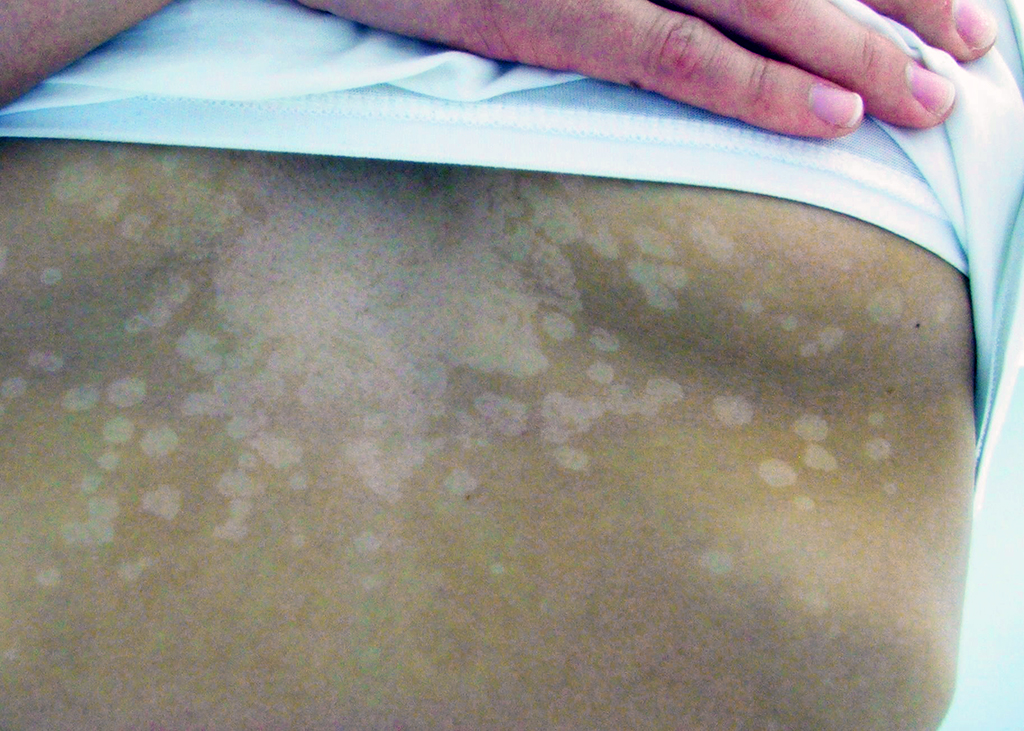
Managing and Preventing Recurrence of Tinea Versicolor
Given that Malassezia yeast is a normal part of the skin microbiome, recurrence of tinea versicolor is common. However, several strategies can help manage the condition and reduce the likelihood of future outbreaks:
Maintenance Therapy
Using medicated cleansers once a week for 10 minutes at a time over several months can help prevent recurrence. This approach may be particularly beneficial for individuals living in warm, humid climates or those prone to frequent outbreaks.
Skincare and Sun Protection
- Avoid oily skin products that may promote yeast growth
- Limit sun exposure, as it can trigger or worsen episodes
- Use broad-spectrum, non-greasy sunscreen with an SPF of at least 30 daily
- Consider using an antifungal shampoo for a few days before sun exposure if it’s unavoidable
Clothing Choices
Opt for loose-fitting clothing made from breathable fabrics like cotton. This helps reduce moisture and heat buildup on the skin, creating a less favorable environment for yeast overgrowth.
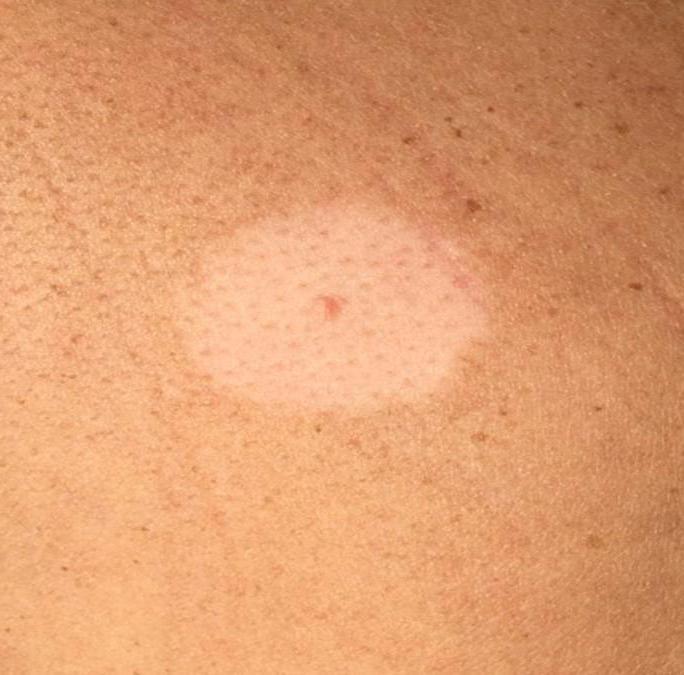
Can dietary changes help manage tinea versicolor? While there’s limited scientific evidence linking diet directly to tinea versicolor, maintaining overall health through a balanced diet and proper hydration may support skin health and immune function. Some individuals find that reducing sugar intake or avoiding certain foods helps manage their symptoms, but more research is needed in this area.
Tinea Versicolor and Emotional Well-being
The visible nature of tinea versicolor can have psychological impacts on those affected. Some individuals may experience:
- Self-consciousness
- Reduced self-esteem
- Social anxiety
- Depression
How can individuals cope with the emotional aspects of tinea versicolor? It’s important to remember that tinea versicolor is a common and treatable condition. Seeking support from friends, family, or mental health professionals can be beneficial. Additionally, joining support groups or online communities for individuals with skin conditions can provide a sense of community and shared experience.

Educating oneself and others about the condition can also help reduce stigma and increase understanding. Remember that the discoloration is temporary and does not reflect on one’s overall health or hygiene.
Tinea Versicolor in Special Populations
While tinea versicolor can affect anyone, certain groups may require special consideration:
Pregnant Women
Pregnant women should consult their healthcare provider before using any antifungal treatments, as some medications may not be safe during pregnancy. Topical treatments are generally preferred when necessary.
Children
Tinea versicolor is less common in young children but can occur. Treatment approaches may need to be adjusted based on the child’s age and the extent of the infection. Gentle, non-irritating treatments are typically preferred.
Immunocompromised Individuals
People with weakened immune systems may be more susceptible to tinea versicolor and may experience more severe or persistent infections. Close monitoring and potentially more aggressive treatment may be necessary for this group.

How does the management of tinea versicolor differ in these special populations? Treatment plans should be tailored to the individual’s specific circumstances, taking into account factors such as age, overall health status, and potential risks associated with different treatment options. Regular follow-ups with a healthcare provider are essential to ensure the effectiveness of treatment and to monitor for any adverse effects.
Advances in Tinea Versicolor Research and Treatment
While current treatments for tinea versicolor are generally effective, ongoing research aims to improve understanding and management of the condition:
Microbiome Studies
Research into the skin microbiome is providing new insights into the role of Malassezia yeast in skin health and disease. This may lead to more targeted treatments that selectively control yeast overgrowth while maintaining a healthy skin microbiome.
Novel Antifungal Agents
Scientists are exploring new antifungal compounds that may be more effective or have fewer side effects than current options. Some of these agents may offer longer-lasting protection against recurrence.

Combination Therapies
Studies are investigating the potential benefits of combining different treatment modalities, such as topical antifungals with oral medications or light-based therapies, to enhance efficacy and reduce treatment duration.
What potential breakthroughs might we see in tinea versicolor treatment in the coming years? While it’s difficult to predict specific outcomes, areas of interest include:
- Development of probiotic treatments to promote a healthy skin microbiome
- Personalized medicine approaches based on individual skin microbiome profiles
- Improved delivery systems for antifungal medications to enhance penetration and efficacy
- Novel prevention strategies targeting the underlying factors that promote yeast overgrowth
As research progresses, individuals with tinea versicolor may benefit from more effective, targeted, and personalized treatment options in the future.
Tinea Versicolor: Cause, Symptoms, and Treatments
What Is Tinea Versicolor?
Tinea versicolor is a fungal infection that causes small patches of discolored spots on your skin. It’s also called pityriasis versicolor. It results from a type of yeast that naturally lives on your skin. When the yeast grows out of control, the skin disease, which appears as a rash, is the result.
Signs and Symptoms of Tinea Versicolor
Acidic bleach from the growing yeast causes areas of skin to be a different color than the skin around them. These can be individual spots or patches. Specific signs and symptoms of the infection include:
- Patches that are white, pink, red, or brown and may be lighter or darker than the skin around them.
- Spots that don’t tan the way the rest of your skin does.
- Spots that show up more boldly when you do tan.
- Spots that may occur anywhere on your body but are most commonly seen on your neck, chest, back, and arms.

- Spots that are dry and scaly and may itch or hurt, although this is rare.
The spots may disappear during cool weather and get worse during warm and humid weather.
Similar conditions
Some skin problems have symptoms that look like tinea versicolor, including:
- Vitiligo: a disease that makes you lose your skin color
- Pityriasis rosea: a rash that causes small spots that fan out on your body in the shape of a tree
These conditions have features that clue your doctor in to what you have, such as texture and rash pattern.
Tinea Versicolor Causes
The yeast that causes tinea versicolor, Malassezia, grows on normal, healthy skin. But these things can trigger an overgrowth that causes the infection:
- Oily skin
- Living in a hot climate
- Sweating a lot
- Hormonal changes
- A weakened immune system
Because the yeast grows naturally on your skin, tinea versicolor isn’t contagious. The condition can affect people of any skin color. It’s more likely to affect teens and young adults. For some people, it can cause emotional distress and feelings of self-consciousness.
The condition can affect people of any skin color. It’s more likely to affect teens and young adults. For some people, it can cause emotional distress and feelings of self-consciousness.
Tinea Versicolor Diagnosis
Your doctor can diagnose tinea versicolor by what the rash looks like.
If they need more information, these tests can help:
- Wood lamp (black light) examination. The doctor uses ultraviolet light, which may make the affected areas appear a fluorescent coppery orange color if they’re the result of tinea versicolor.
- Microscopy using potassium hydroxide (KOH). Your doctor removes cells from your skin, soaks them in potassium hydroxide, then looks at them under a microscope.
- Skin biopsy. The doctor takes a skin sample by scraping some skin and scales from the affected area to look at under a microscope. With children, the doctor may lift off skin cells by first firmly attaching clear tape to the affected area then removing it.
 The sample then can be stuck directly onto a slide to look at with a microscope.
The sample then can be stuck directly onto a slide to look at with a microscope.
Tinea Versicolor Treatment
Treatment of tinea versicolor can consist of creams, lotions, or shampoos that you put on your skin. It can also include medication given as pills. The type of treatment will depend on the size, location, and thickness of the infected area.
Treatment options include:
- Topical antifungals. You put these directly to your skin. They may be in the form of lotion, shampoo, cream, foam, or soap. They keep yeast growth under control. Over-the-counter anti-fungal topical products containing ingredients such as clotrimazole, ketoconazole, miconazole, zinc-pyrithione, selenium sulfide, and terbinafine are available. Prescription products are available too.
- Antifungal pills. These may be used to treat more serious or recurrent cases of tinea versicolor. Sometimes doctors use them because they clear up the infection faster.
 You’ll need a prescription for these medicines. They can have side effects. Your doctor will keep an eye on you while you’re taking antifungal pills.
You’ll need a prescription for these medicines. They can have side effects. Your doctor will keep an eye on you while you’re taking antifungal pills.
Treatment usually gets rid of the fungal infection. But skin discoloration may take several months to resolve.
Lifestyle Tips for Managing Tinea Versicolor
Episodes are very common because the yeast that causes the infection is a normal fungus that lives on your skin. You might use medicated cleansers once a week for 10 minutes at a time for a few months to help prevent tinea versicolor from coming back. You may need to use these cleansers if the infection keeps returning, especially if you live in a warm and humid area.
To help you manage tinea versicolor you can:
- Avoid using oily skin products.
- Reduce the time you spend in the sun. It may trigger or worsen an episode, and a tan makes the rash more visible.
- Use an anti-fungal shampoo daily for a couple of days prior to sun exposure if you do have to go out.

- Put on sunscreen every day. Use a broad spectrum, nongreasy formula with a minimum sun protection factor (SPF) of 30.
- Try a dandruff shampoo with selenium sulfide.
- Wear loose clothing.
- Choose breathable fabrics, like cotton, to decrease sweating.
Tinea Versicolor | Marietta Dermatology
Tinea versicolor is a common skin condition caused by an overgrowth of yeast on the skin’s surface. The yeast normally live in the pores of the skin and thrive in oily areas such as the neck, upper chest, and back. An overgrowth results in a fungal infection that causes uneven skin color, scaling, and sometimes itch.
WHAT TINEA VERSICOLOR LOOKS LIKE
– Small, scaly, white-to·pink or tan-to-dark spots appear, generally scattered over the upper arms, chest, and back and sometimes on the neck and face.
-Tan-to-pink spots or very faint on light·colored skin, and light or dark spots on dark skin.
-The fungus prevents the skin from tanning normally, so as the rest of the skin tans, pale spots become more noticeable, especially on dark skin.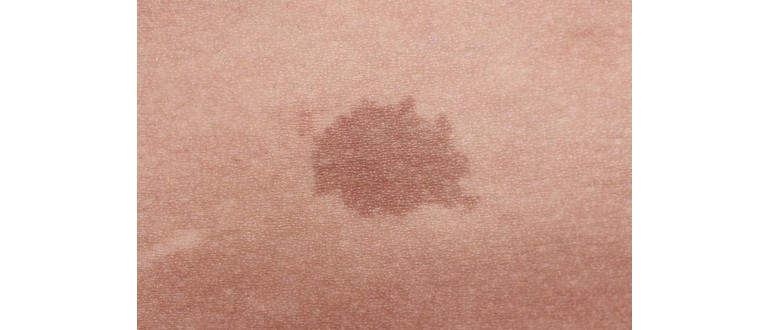
CAUSES OF TINEA VERSICOLOR
Tinea versicolor usually produces few symptoms. Slight itching may intensify when a person becomes hot.
Why some people develop tinea versicolor and others do not is not entirely clear. The yeast which causes tinea versicolor is normally present in small numbers on normal skin, and the yeast can become overgrown on anyone.
-Dark- and light-skinned people are equally prone to developing tinea versicolor.
-People with oily skin may be more susceptible than those with naturally dry skin.
-Most commonly develops in teenagers and young adults.
-Children and the elderly rarely develop this condition, except in tropical climates.
-In areas with high temperatures and humidity, tinea versicolor occurs in individuals of every age, and people in tropical regions can have these spots year round.
-Tinea versicolor also is more common in temperate climates during the summer when the temperature and humidity are high, with the spots generally fading during the cooler and drier months of the year.
DIAGNOSIS
Although the light- or dark-colored spots can resemble other skin conditions, tinea versicolor can be easily recognized by a dermatologist. In most cases, a visual exam of the skin is all that is needed to make the diagnosis.
To confirm the diagnosis, scale may be gently scraped from the skin so that it can be examined under a microscope for the presence of yeast. A special light called a Wood’s lamp also may be used. The lamp is held four or five inches from the affected skin. If tinea versicolor is present on the skin, the affected skin will appear yellowish green in color.
TREATMENT OF TINEA VERSICOLOR
Each patient is treated by a dermatologist according to the severity and location of the disease, the climate, and the desire of the patient. Treatments may include:
-Topical (shampoos, soaps, creams, or lotions) medications that may contain selenium sullide, ketoconazole, or pyrithione zinc
-Oral medications, including ketoconazole, remembering that due to possible side effects, or interactions with other medications, the use of prescription medicines should be supervised by your dermatologist
-Medicated cleansers, used once or twice a month, especially during warm, humid months of the year, may be recommended since tinea versicolor can recur
It is important to remember that the yeast is easy to kill, but it can take weeks or months for the skin to regain its normal color.
Tinea Versicolor | Michigan Medicine
Topic Overview
What is tinea versicolor?
Tinea versicolor (say “TIH-nee-uh VER-sih-kuh-ler”) is a fungal infection that causes many small, flat spots on the skin. The spots can be flaky or mildly itchy. The many small spots may blend into large patchy areas, usually on the oily parts of the upper body like the chest and back. The spots can be either lighter or darker than the skin around them.
What causes tinea versicolor?
Tinea versicolor is caused by a fungus. This fungus lives all around us, including on the skin. Normally, regular washing and showering removes dead skin and fungi (more than one fungus). But in hot and humid weather, such as during the summer or in tropical areas, fungi may grow more rapidly. As these fungi grow in number, their natural balance on the skin is affected, the normal color of the skin changes, and spots appear.
People with oily skin, especially teens and young adults, are more likely to get tinea versicolor.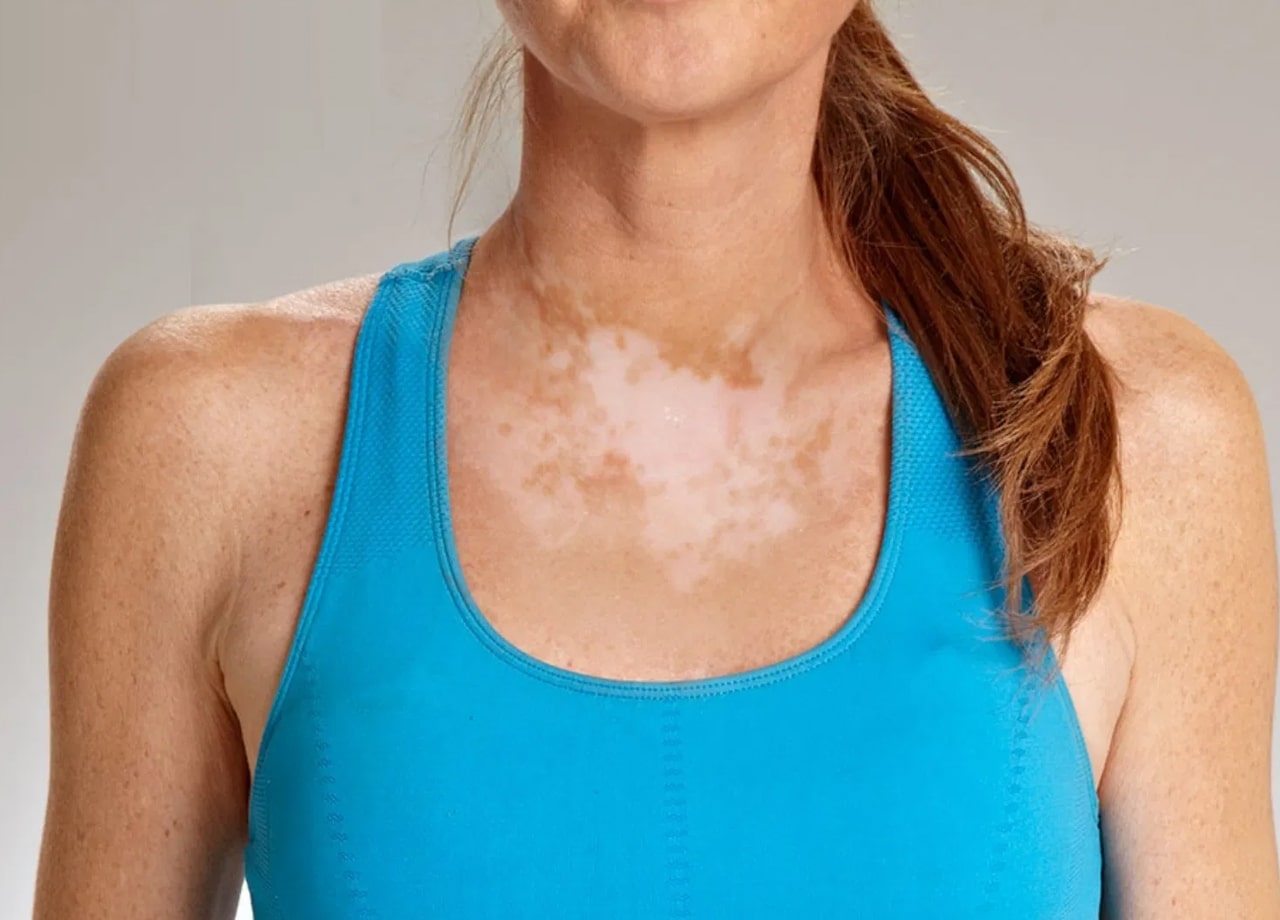 It does not spread from person to person.
It does not spread from person to person.
Other things that increase your chance of getting tinea versicolor include:
- Having an impaired immune system, which can occur during pregnancy or from some illnesses.
- Using certain medicines, such as corticosteroids, antibiotics, or birth control pills.
What are the symptoms?
Symptoms of tinea versicolor include small, flat, round or oval spots that may, over time, form patches. The spots occur on oily areas of skin on the upper chest, back, or upper arms or, less often, on the upper thighs, neck, or face.
The spots can be lighter or darker than the skin around them. If your skin tends to get darker with sun exposure, the spots may be easier to see in the summer because they don’t tan with the rest of your skin. For people whose skin is lighter during the winter, the spots may be harder to see at that time of year.
The spots are flat and may be white, pink, red, tan, or brown, depending on your skin color. Each person’s spots are usually just one color. The spotted skin may be scaly. Although it’s not common, your skin may itch, especially when you are hot.
Each person’s spots are usually just one color. The spotted skin may be scaly. Although it’s not common, your skin may itch, especially when you are hot.
How is tinea versicolor diagnosed?
Your doctor often can tell if you have tinea versicolor by looking at the spots.
He or she may look at a sample (scraping) of the infected skin under a microscope. The test used most often for this is the KOH test. This can show whether the problem is caused by a fungus.
How is it treated?
Treatment can prevent the rash from spreading and improve the appearance of your skin. The condition is easy to treat. But not everyone chooses to get treatment. You only need to treat the infection if it bothers you or causes problems.
Products that you put on your skin (topical treatments) are the most common treatment for tinea versicolor.
- These may include antifungal shampoos, creams, and foams. Shampoos can be used on the body as well as the head and may be easier to use than creams or foams.

- Depending on how strong the medicine is, you may or may not need a prescription for these products. For example, shampoos used to treat tinea versicolor usually contain selenium sulfide. They are available in 2.5% strength with a prescription and in 1% strength without a prescription (for example, Selsun Blue, Head and Shoulders).
- You may need to use the product once or twice each day for 1 to 2 weeks or longer.
If the infection is severe, returns often, or does not get better with skin care, your doctor may prescribe antifungal pills. Pills tend to be easier for people to use than the products that you put on your skin. They may also work better at curing the rash. But they have side effects and can affect your heart and liver, so you may need blood tests while you’re taking them. People with liver problems, heart problems, or other health problems may not be able to take the pills.
Treatment kills the fungi quickly. But it can take months for the spots to disappear and for your skin color to return to normal. Also, the infection tends to come back after treatment. It may come and go over the years. In general, it tends to get better as you get older.
Also, the infection tends to come back after treatment. It may come and go over the years. In general, it tends to get better as you get older.
Can tinea versicolor be prevented?
If you have frequent problems with tinea versicolor, there are a couple of things you can do so that it is less likely to come back.
- Use antifungal skin creams, shampoos, or solutions at least once a month. Ask your doctor if you should use them more often.
- Talk to your doctor about taking antifungal pills once a month. Most people don’t need to do this, but it can help in some cases.
Some doctors believe that fungi that remain in clothing may cause the infection to return. Normal washing and cleaning is usually effective in removing the fungus from clothes. But for persistent tinea versicolor, you may need to dry-clean your clothes or wash them in the hottest possible water.
Tinea Versicolor: Symptoms, Causes, Treatments
Overview
What is tinea versicolor?
Tinea versicolor is a superficial fungal infection of the skin.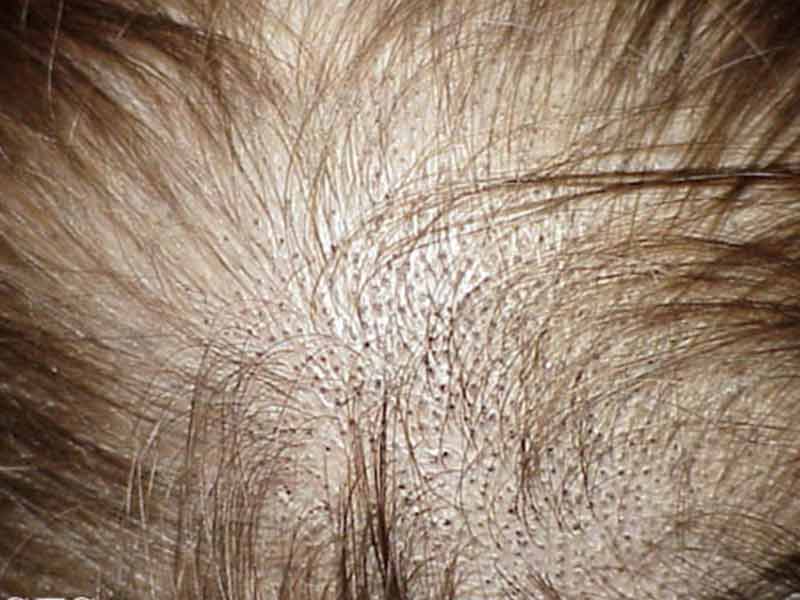 It is caused by overgrowth of a yeast that is normally present on the skin. It can cause skin discoloration and, sometimes, mild itching. The infection is also known as pityriasis versicolor.
It is caused by overgrowth of a yeast that is normally present on the skin. It can cause skin discoloration and, sometimes, mild itching. The infection is also known as pityriasis versicolor.
For many people, doctors treat the condition successfully with topical or oral antifungal medications. With treatment, most people recover fully from this infection.
Who is most at risk for getting tinea versicolor?
Tinea versicolor affects many people worldwide. People living in tropical or subtropical regions are most at risk. It is common during summer months in temperate climates and around puberty when the oil glands of the skin are more active.
You may be at higher risk if your immune system does not function properly. This may occur if you take medications like corticosteroids, have had an organ transplant, or have medical conditions like diabetes. Pregnant women are more susceptible to tinea versicolor.
Is tinea versicolor contagious?
Tinea versicolor is not contagious.
Symptoms and Causes
What causes tinea versicolor?
An overgrowth of yeast on the skin surface causes tinea versicolor. If your skin is warm, moist, and oily enough, naturally occurring yeast may grow in small colonies. These yeast colonies cause the symptoms of tinea versicolor.
What are the symptoms of tinea versicolor?
For most people, tinea versicolor causes mild symptoms. These may include:
- Skin discoloration, usually on the face, neck, chest and abdomen. Discolored patches can appear anywhere on your body.
- Itching at or around areas of skin affected by tinea versicolor
- Excessive sweating
- Patches of skin that:
- Have sharply defined edges
- Are lighter or darker than normal skin and can be pink, yellow-brown or tan
- May dry out and form scales
- May not darken in the sun
Diagnosis and Tests
How is tinea versicolor diagnosed?
Doctors can diagnose tinea versicolor with simple skin tests. In one type of test, your doctor scrapes off some loose skin cells he or she believes are infected with tinea versicolor. This skin sample is examined under a microscope for the presence of yeast cells.
In one type of test, your doctor scrapes off some loose skin cells he or she believes are infected with tinea versicolor. This skin sample is examined under a microscope for the presence of yeast cells.
Your doctor may also examine your skin using a Wood lamp. This device uses ultraviolet (UV) light to illuminate your skin. Areas of skin where tinea versicolor is present look yellow-green under the UV light.
Management and Treatment
How is tinea versicolor treated?
Doctors treat tinea versicolor with antifungal medications. Your doctor may recommend a topical antifungal medication, such as ketoconazole (Xolegel® or Extina®). You’ll apply this as a cream or wash to areas of your skin affected by the condition.
If your symptoms are severe, your doctor may also prescribe oral antifungals, such as fluconazole (Diflucan®).
What complications are associated with tinea versicolor?
For some people, tinea versicolor causes skin discoloration that lasts for months to years.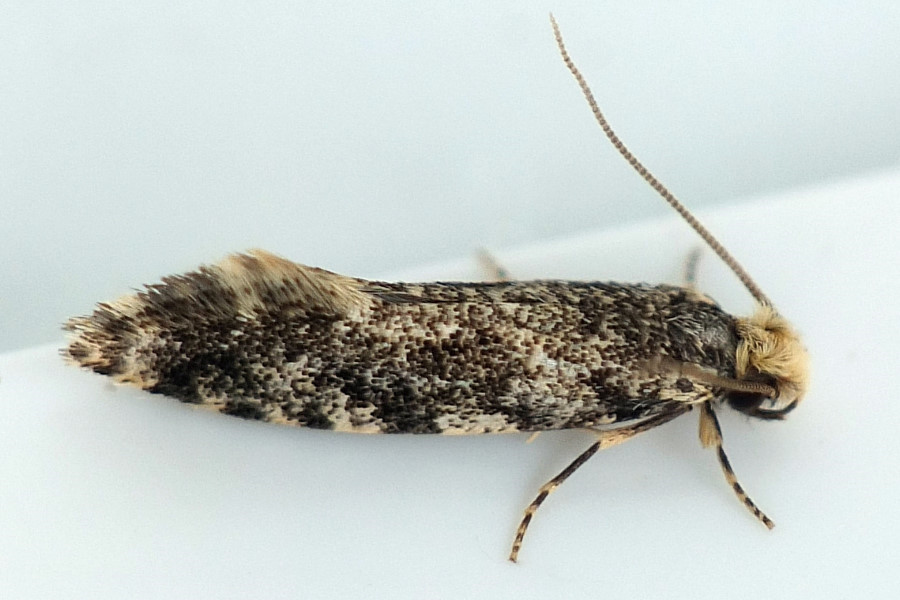 In most cases, this discoloration fades away gradually after treatment is complete.
In most cases, this discoloration fades away gradually after treatment is complete.
What outcomes should I expect from treatment?
Most people completely clear their tinea versicolor with treatment. Proper treatment with antifungal medication is necessary to ensure a complete recovery and prevent recurrences.
Prevention
Can tinea versicolor be prevented?
The best way to prevent tinea versicolor is by practicing good skin hygiene. The yeast that causes this infection occurs naturally on your skin. Bathing and drying of your skin lower the likelihood of infection.
If you have a history of tinea versicolor, your doctor may recommend you use soap containing zinc pyrithione (like Vanicream™ Z-Bar or DermaZinc™ Zinc Therapy Soap), ketoconazole (Nizoral®) or selenium sulfide (Selsun blue). This type of soap may help prevent future infections and overgrowth of yeast.
Outlook / Prognosis
What is the prognosis (outlook) for people with tinea versicolor?
Tinea versicolor is not a harmful infection and only affects the top layer of the skin.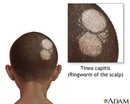 People often have more than one episode of tinea versicolor. Because the yeast grows naturally on the skin, it can recur (come back). Using medicated soap a couple of times each week or month can reduce recurrences of tinea versicolor.
People often have more than one episode of tinea versicolor. Because the yeast grows naturally on the skin, it can recur (come back). Using medicated soap a couple of times each week or month can reduce recurrences of tinea versicolor.
Living With
When should I call my doctor?
If you develop symptoms of tinea versicolor, schedule an appointment with your doctor. He or she can determine if you have this condition and recommend further treatment options.
What Is Tinea Versicolor? Symptoms, Causes, Treatment, and Prevention
Favorite Orgs for Essential Tinea Versicolor Info
Mayo Clinic
The Mayo Clinic offers a wealth of patient care information related to various health topics, including tinea versicolor. You’ll find an overview of symptoms, causes, complications, treatments, and prevention tips. Got a skin concern? Use the website’s Find a Doctor tool to locate a dermatologist.
American Academy of Dermatology (AAD)
The AAD is another excellent source for trustworthy information about tinea versicolor.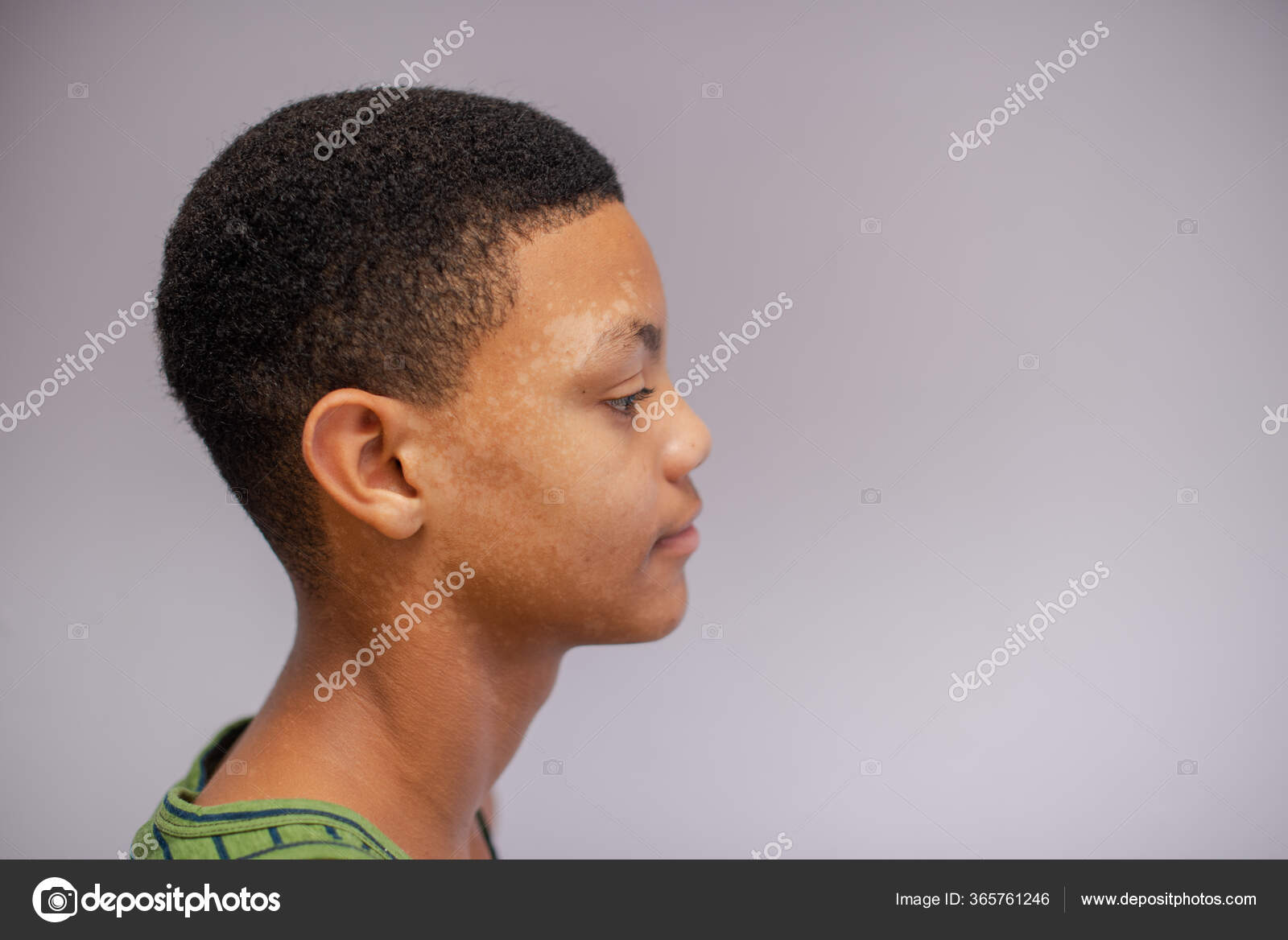 Its website not only provides a comprehensive overview of this skin infection but you’ll find self-care tips and a handout on how to care for a child with tinea versicolor. There’s also a tool to locate a board-certified dermatologist near you.
Its website not only provides a comprehensive overview of this skin infection but you’ll find self-care tips and a handout on how to care for a child with tinea versicolor. There’s also a tool to locate a board-certified dermatologist near you.
American Osteopathic College of Dermatology (AOCD)
The mission of the AOCD is to provide support and education in the field of dermatology. Its website provides images of tinea versicolor, as well as information on symptoms and causes. There’s even a video explaining how to self-treat the infection at home.
KidsHealth
Looking for more information on tinea versicolor? KidsHealth provides resources for parents, kids, teenagers, and educators. Other useful tools on the website include videos, expert answers, and newsletters.
Favorite Resources for Online Support
MDLive
Need advice on a skin condition? For $75 (or less) you can speak with an MDLive dermatologist online and get a quick answer anytime, anywhere.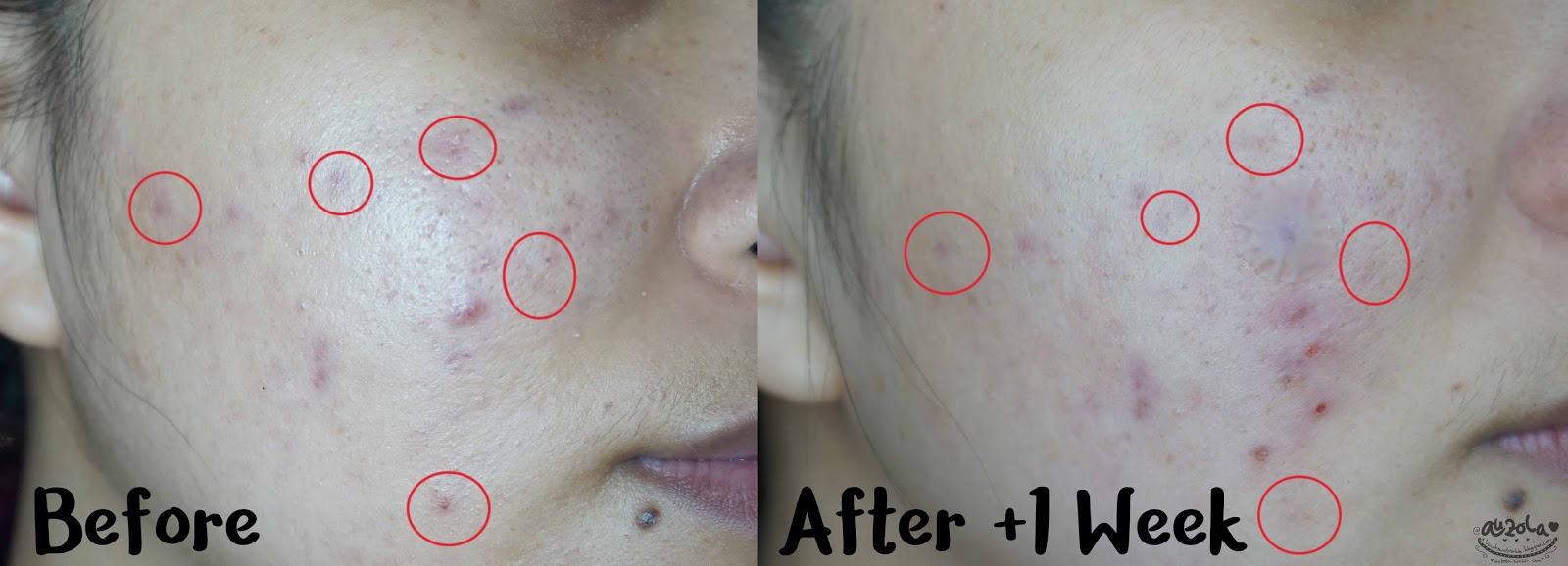 Send a few photos of your skin for a doctor to diagnose your condition — and if necessary, they’ll write a prescription.
Send a few photos of your skin for a doctor to diagnose your condition — and if necessary, they’ll write a prescription.
SkyMD
This is another affordable way to consult a dermatologist online. The board-certified dermatologists from SkyMD are available 24/7 to diagnose your skin condition and write a prescription, if necessary.
Symptoms, Causes, Diagnosis, and Treatment
Tinea versicolor, also known as pityriasis versicolor, is a superficial fungal infection caused by an overgrowth of yeast that occurs naturally on the skin. The rash that develops is characterized by distinct patches of discolored skin and mild itching that can be effectively treated with over-the-counter antifungal products, although it can take some time for skin color to return to normal. It’s most common in teenagers and young adults but isn’t contagious.
Tinea versicolor rash.
Raimo Suhonen / DermNet / CC BY-NC-ND
Symptoms
The tell-tale symptom of tinea versicolor is a rash that appears as small flat patches of discolored skin with defined borders. The rash may be hypopigmented (lighter than the surrounding skin) or hyperpigmented (darker than the surrounding skin), in shades ranging from white, red, pink, or brown.
The rash may be hypopigmented (lighter than the surrounding skin) or hyperpigmented (darker than the surrounding skin), in shades ranging from white, red, pink, or brown.
Patches of tinea versicolor rash can slowly increase in size to join with nearby spots to create large areas of discolored skin. Sometimes the spots diminish or disappear during the cooler seasons, but come back with the return of hot, humid weather.
Sun exposure may make tinea versicolor more obvious because the affected areas won’t tan.
The infection most often develops on the back, chest, and shoulders, but can also appear on the arms, neck, and face. Other symptoms of tinea versicolor include mild itching and dryness or scaliness.
Causes
The yeasts that cause tinea versicolor belong to the Malassezia family, including Pityrosporum orbiculare and Pityrosporum ovale. These yeasts exist naturally on the outer layer of skin (stratum corneum) and hair follicles of normal, healthy skin.
Though generally harmless, these yeasts can sometimes experience overgrowth and convert into their pathogenic mycelial phase known as Malassezia furfur, resulting in the outbreak of the rash.
Hypopigmentation occurs when the yeast produces a chemical that turns off melanocytes—special skin cells that produce melanin, the pigment responsible for skin, eye, and hair color. Hyperpigmentation is the result of inflammation caused by the fungal infection.
There are a number of things that lead to yeast overgrowth, including:
Tinea versicolor can occur at any age but is most common in adolescence and early adulthood (a time when the sebaceous glands are particularly active). It’s also commonly seen in tropical and semi-tropical climates.
Diagnosis
Most cases of tinea versicolor can be diagnosed by a doctor based on the appearance of the rash, although it can sometimes be confused with a number of other rashes, including:
When additional testing is necessary to differentiate tinea versicolor from other rashes, the diagnosis can be confirmed with any of several tests:
- A KOH test can confirm the rash’s characteristic “spaghetti and meatballs” appearance beneath the microscope.

- The Wood’s light examination will make the yeast glow a pale yellow beneath a black light.
- Fungal cultures, while infrequently used, can confirm infection by growing the fungus on a culture medium.
Treatment
Tinea versicolor almost always can be effectively eradicated with a topical, over-the-counter (OTC) antifungal soap, shampoo, or cream. Zinc pyrithione 1% shampoo, which is easier to find than the soap, is also effective against tinea versicolor.
Among the most common such products are:
- Lotrimin AF (clotrimazole)
- Selsun Blue (selenium sulfide)
- Zinc pyrithione soap or shampoo
- Monistat (miconazole)
- Lamisil (terbinafine)
For cases of tinea versicolor that are especially severe or that don’t respond to OTC treatments, prescription medications may be required. Oral antifungals such as Diflucan (fluconazole) as well as prescription antifungal creams and shampoos, such as Nizoral (ketoconazole), are among the options often used.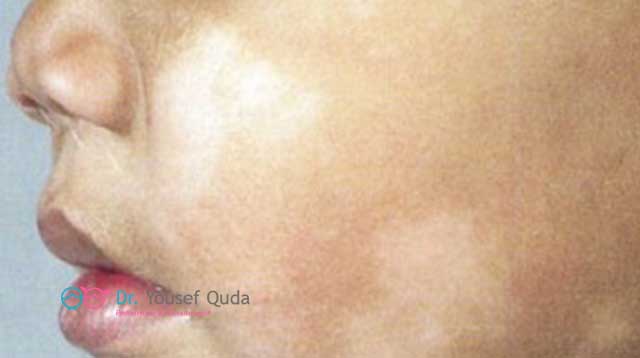
Note that even though treatment kills the pathogenic yeasts, skin discoloration can persist for weeks or months until melanocytes are able to produce melanin again.
Tinea versicolor has a recurrence rate of around 80% after two years, and re-treatment may be needed. For people who are prone to developing tinea versicolor, regular use of an antifungal soap or wash can help prevent the rash from recurring. Once a month is customarily recommended, but some people may need to use antifungal products more often, especially in the warm weather months.
A Word From Verywell
Although tinea versicolor is a benign skin condition, people who have it often feel self-conscious about the skin discoloration it causes. The best way to deal with any embarrassment caused by this rash is to take steps to prevent it from worsening until the skin returns to normal.
The first of these is the be highly vigilant about sun protection. Any degree of tanning can exacerbate the contrast between the tanned skin and skin affected by the rash.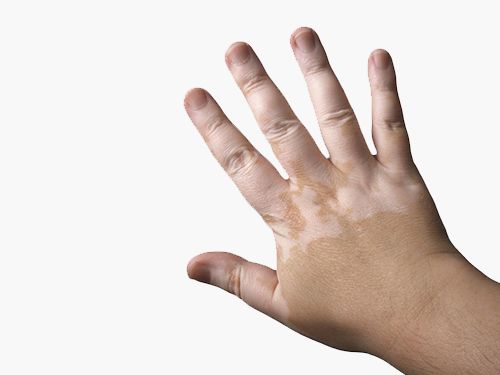
Equally important is to steer clear of oily body lotions or creams, as oil can make the rash worse. For sunscreen, choose a product that is labeled oil-free or noncomedogenic.
Page Not Found
Page Not Found
UT University Health Services
The page you have requested cannot be found. It may have been moved, renamed, or retired.
University Health Services is committed to providing high-quality care to patients of all ages, races, ethnicities, physical abilities or attributes, religions, sexual orientations, or gender identities/expression.
l
l
l
l
l
l l
90,000 Treatment of pityriasis versicolor in St. Petersburg
Petersburg
An experienced dermatologist, mycologist of the Altermed Medical Center Natalya Viktorovna Shister answers the questions of where it comes from, to whom it bothers, why it lives for a long time and how to properly treat pityriasis versicolor.
Prices for services
Initial appointment with a dermatologist (assessment of patient complaints, taking anamnesis, examination, making a preliminary diagnosis, consultation)
Initial appointment – a visit to a doctor of a specific specialty for the first time.
Make an appointment
Reception of a dermatologist when removing neoplasms (assessment of complaints, taking anamnesis, dermatoscopy according to indications)
Make an appointment
What is this disease?
Pityriasis versicolor, which is also called multi-colored or colored lichen, is an infectious fungal disease.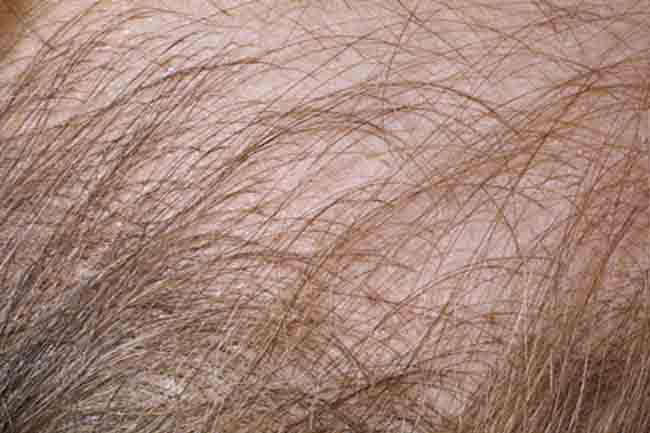 Its causative agent is fungi of the genus Malassezia from the group of dermatomycosis. It is believed that the population of southern countries is more susceptible to the disease with pityriasis versicolor, due to the hot climate. But in our country, the disease is quite common, according to various sources, from 5 to 15% of the population suffers from it. Most often, people with a special predisposition to it are sick with pityriasis versicolor. Exacerbations of the disease occur during the sunny season. Because of this, pityriasis versicolor is popularly called the sun fungus.However, if you are “lucky” to catch a “solar” sore, then the consequences will not be so bright. Treatment for pityriasis versicolor can take … years. The fact is that under certain circumstances the fungus tends to recur repeatedly and can bring its “owner” to despair. Fortunately, the disease does not lead to disability and does not pose a threat to life.
Its causative agent is fungi of the genus Malassezia from the group of dermatomycosis. It is believed that the population of southern countries is more susceptible to the disease with pityriasis versicolor, due to the hot climate. But in our country, the disease is quite common, according to various sources, from 5 to 15% of the population suffers from it. Most often, people with a special predisposition to it are sick with pityriasis versicolor. Exacerbations of the disease occur during the sunny season. Because of this, pityriasis versicolor is popularly called the sun fungus.However, if you are “lucky” to catch a “solar” sore, then the consequences will not be so bright. Treatment for pityriasis versicolor can take … years. The fact is that under certain circumstances the fungus tends to recur repeatedly and can bring its “owner” to despair. Fortunately, the disease does not lead to disability and does not pose a threat to life.
How does pityriasis versicolor manifest and how does it proceed?
When infected with pityriasis versicolor, irregular yellow-pink, light or dark brown spots with slight peeling appear on the skin of the chest, back, shoulders, less often the groin and scalp.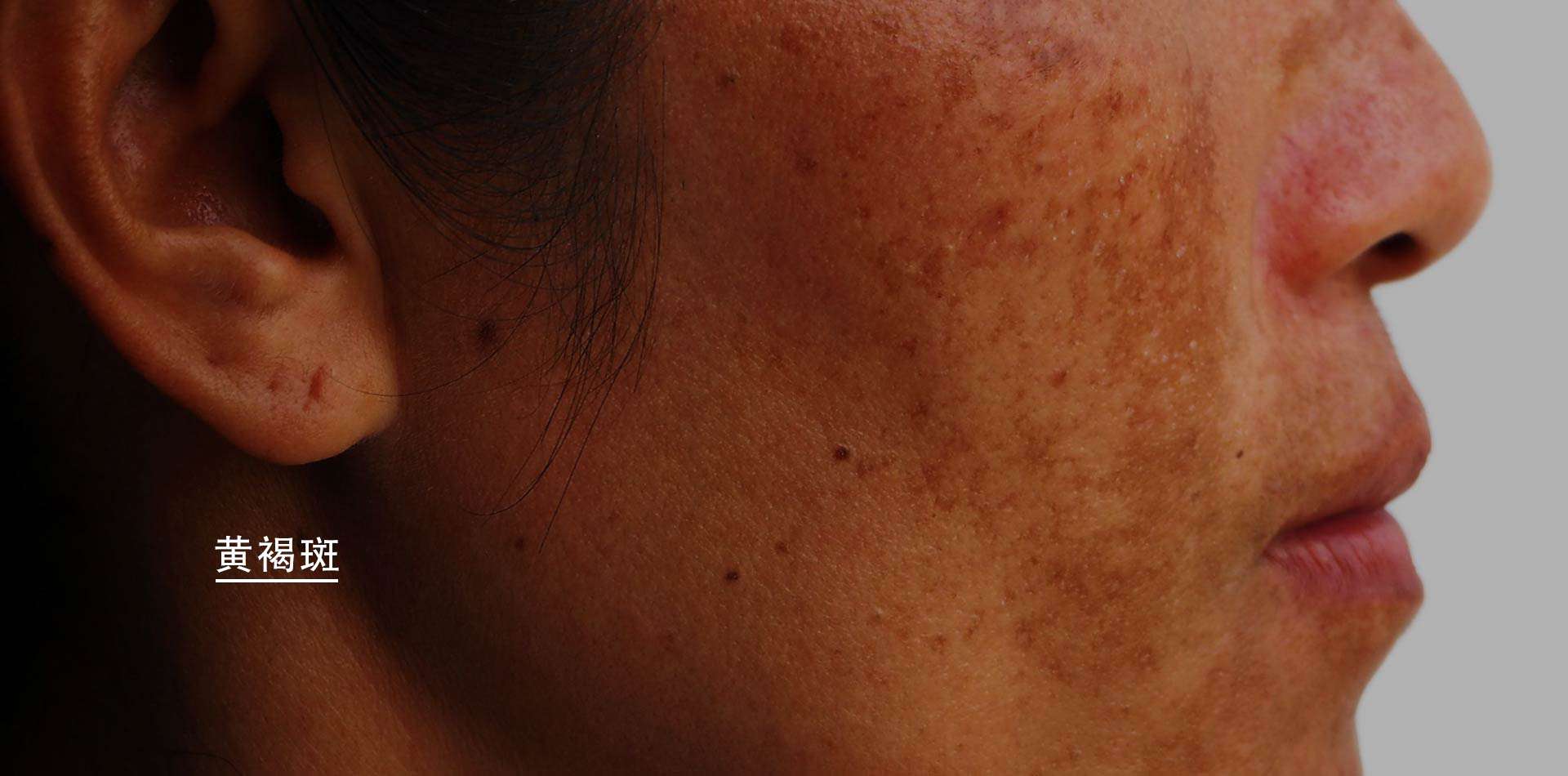 The spots are small, not inflammatory. Over time, without treatment, pityriasis versicolor merges into larger foci. After sunburn, unburned white spots remain on the places of the rash. Pityriasis peeling in the affected area is insignificant. The course of pityriasis lichen in affected people is quite stubborn and can last for years or even decades. Without treatment, pityriasis versicolor causes great psychological damage to patients, since it noticeably spoils the appearance of the skin.
The spots are small, not inflammatory. Over time, without treatment, pityriasis versicolor merges into larger foci. After sunburn, unburned white spots remain on the places of the rash. Pityriasis peeling in the affected area is insignificant. The course of pityriasis lichen in affected people is quite stubborn and can last for years or even decades. Without treatment, pityriasis versicolor causes great psychological damage to patients, since it noticeably spoils the appearance of the skin.
IMPORTANT! Treatment of pityriasis lichen is not at all expensive and not at all difficult! Therefore, you should not use the advice of friends or Internet comrades in misfortune.Go to a specialist and in the end you will win both money and time.
Where do white spots come from?
The reason for the appearance of spots with pityriasis versicolor is that the fungus grows in the upper layer of the skin and disrupts the cells that are responsible for the production of the pigment melanin. Melanin contributes to the appearance of sunburn on the skin of a person under the influence of sunlight. And the acid produced by the harmful fungus reduces the ability of melanocytes to produce pigment.So hypopigmented, that is, devoid of sunburn, areas appear on the patient’s skin with pityriasis lichen.
Melanin contributes to the appearance of sunburn on the skin of a person under the influence of sunlight. And the acid produced by the harmful fungus reduces the ability of melanocytes to produce pigment.So hypopigmented, that is, devoid of sunburn, areas appear on the patient’s skin with pityriasis lichen.
How does the infection occur?
It is believed that pityriasis versicolor is very contagious. But this opinion is not supported by all dermatologists-mycologists. Pityriasis versicolor can be contracted from a loved one through personal contact or through household use through objects used by the infected, for example, through bed linen, towels, clothes, washcloths.You can pick up the fungus in the dressing room of the store. The incubation period for pityriasis versicolor is from two weeks to several months.
Make an appointment
Are there predisposing factors?
The fungus, which is the causative agent of pityriasis versicolor, can live on the skin for quite a long time, without outwardly manifesting itself in any way.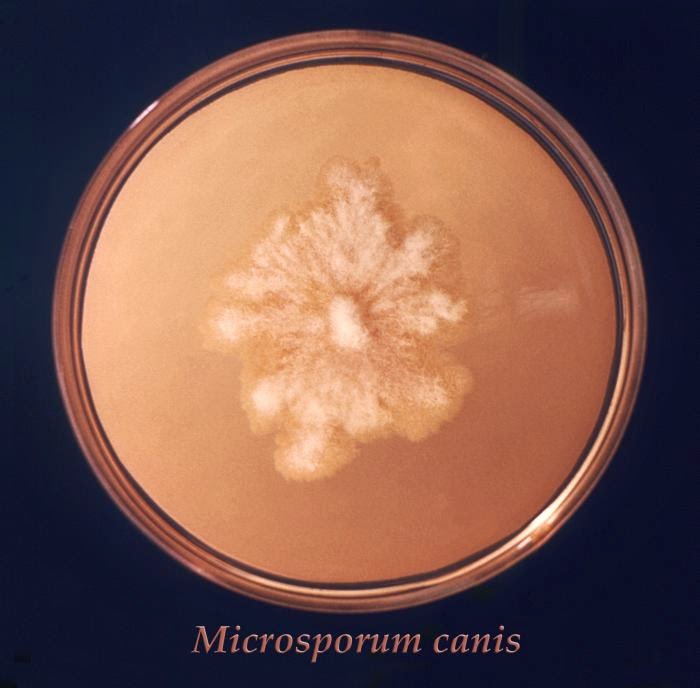 In order for its signs to show up, you need a push. Such an impetus to the active development of the fungus can be endocrine pathologies, increased sweating, weakening of immunity, stressful situations for the skin that violate the protective function of the skin – a solarium, excessive exposure to the sun, frequent use of antibacterial soaps and shower gels.
In order for its signs to show up, you need a push. Such an impetus to the active development of the fungus can be endocrine pathologies, increased sweating, weakening of immunity, stressful situations for the skin that violate the protective function of the skin – a solarium, excessive exposure to the sun, frequent use of antibacterial soaps and shower gels.
IMPORTANT! It is tempting to think of self-medication for pityriasis versicolor. It seems so simple – I bought an anti-fungal ointment, did it as indicated in the annotation for use, and the trick is in the bag. Alas! Without an individually qualified course of therapy, the fungus will simply adapt to the drugs used, and further treatment will be complicated. Unsystematic or symptomatic self-treatment is highly undesirable.
How is the diagnosis carried out?
Diagnosis of pityriasis lichen consists in visual examination and collection of anamnesis.In addition, mycologists use the Balser iodine test – the spots are smeared with tincture of iodine, after which the affected areas become dark brown. For diagnostics, the so-called Wood’s lamp is also used. In the light of the rays of this lamp, the centers of pityriasis lichen give a yellow glow. Examination under a microscope shows a typical picture – an accumulation of fungal filaments with specific cells.
For diagnostics, the so-called Wood’s lamp is also used. In the light of the rays of this lamp, the centers of pityriasis lichen give a yellow glow. Examination under a microscope shows a typical picture – an accumulation of fungal filaments with specific cells.
Is treatment possible without relapse?
Pityriasis versicolor can be treated quite successfully.At the same time, there are frequent – up to several times a year – relapses of the disease. What’s the matter? In regular preventive maintenance and sanitation of living quarters. In addition to the direct course of treatment, it is necessary to boil all bedding, underwear, clothes and towels that the patient used. After washing, the listed items must be ironed on both sides with an iron. If the clothes cannot be boiled, they must be disinfected in another way or simply thrown away. Such hygiene items as, for example, a washcloth, must also be destroyed, because this is the most favorable territory for the life of the fungus. The maximum number of household items should be washed with chlorine-containing products, the floor should be washed with the same products and the entire house should be wet cleaned. In a word, the fight against the ubiquitous and tenacious (and he is just that) fungus must be waged on all fronts. And the enemy will surely retreat.
The maximum number of household items should be washed with chlorine-containing products, the floor should be washed with the same products and the entire house should be wet cleaned. In a word, the fight against the ubiquitous and tenacious (and he is just that) fungus must be waged on all fronts. And the enemy will surely retreat.
As for the course of therapy itself, there are currently quite a few effective drugs and treatment regimens for pityriasis versicolor. The main thing is to approach the matter comprehensively and follow all the recommendations of a dermatologist.The full course of treatment for pityriasis versicolor and its prevention consists in the use of antifungal ointments, possibly a course of antibiotics (in case of frequent relapses), hardening, regular dousing with acidified water, the use of special shampoos, rubbing the skin with a weak solution of salicylic alcohol, etc.
IMPORTANT! No one, even the most experienced and titled doctor, will give a guarantee for lifelong cure of pityriasis versicolor. After all, people with a special predisposition to such sores are ill with it, which means that they will always be subject to an increased risk of infection.But with full observance of preventive measures, you can minimize the chances of re-contracting the nasty fungus.
After all, people with a special predisposition to such sores are ill with it, which means that they will always be subject to an increased risk of infection.But with full observance of preventive measures, you can minimize the chances of re-contracting the nasty fungus.
Doctors
All doctors
90,000 Causes, symptoms and treatment 2021
What is Tinea versicolor?
Malassezia fungus is a type of yeast found on the surface of the skin that usually does not cause any health problems.In fact, many microbiota (or microscopic organisms), including the yeast like Malassezia, which live in large communities on your skin, help protect you from infections and other pathogens that can harm or disease. They live alongside the cells in your body in a symbiotic relationship, with skin cells and tiny organisms that support and benefit each other.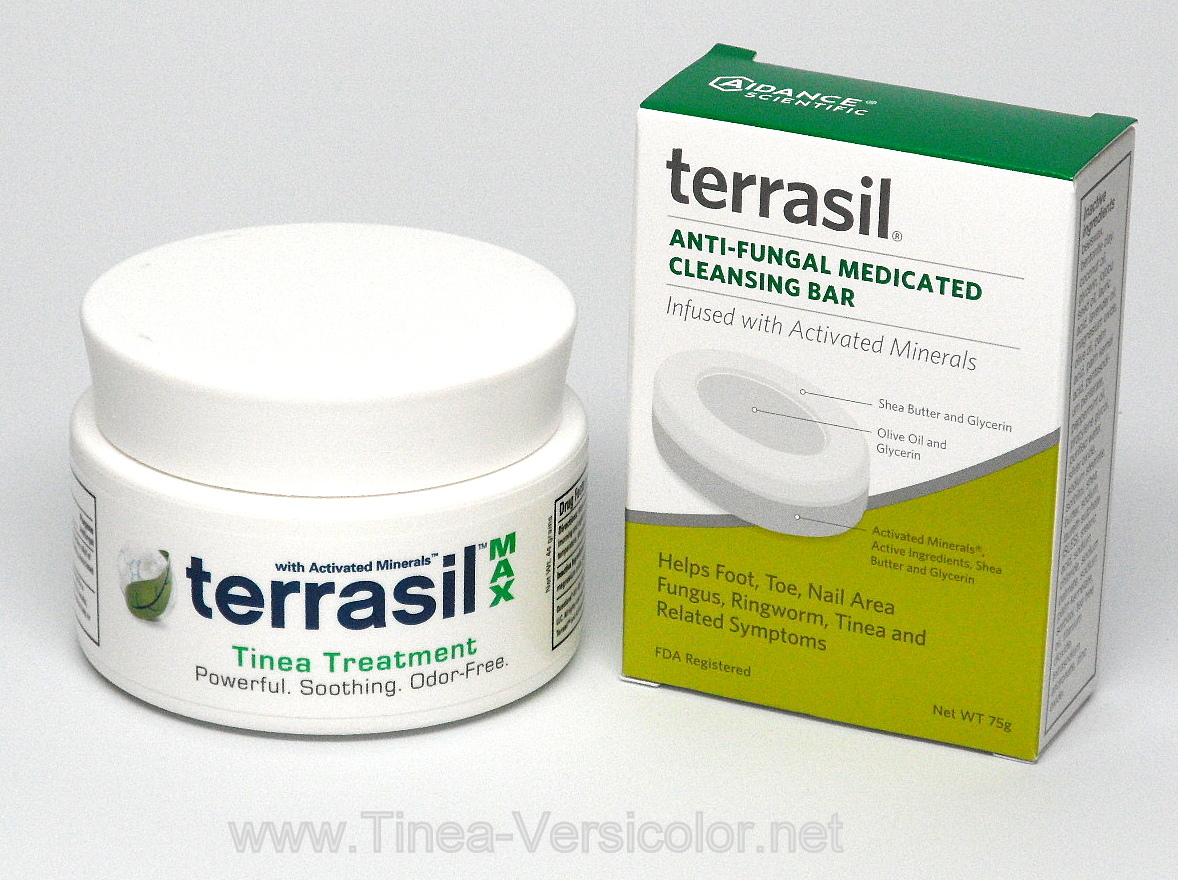
Malassezia causes an infection or suppresses your immune system. Causes What causes the variety of tinea? Tinea versicolor occurs when
Malassezia
grows rapidly on the surface of the skin.Doctors aren’t sure why this is happening. Several factors can contribute to the growth of this yeast on the skin, including: hot and humid weather, excessive sweating
- oily skin
- weakened immune system
- hormonal changes
- Tinea versicolor can occur in people from all ethnic backgrounds and is more common in adolescents and young adults. Adults are more likely to develop tinea versicolor if they visit an area with a subtropical climate.
Symptoms What are the symptoms of tinea versicolor?
Lighted skin patches are the most prominent symptom of tinea versicolor, and these patches usually appear on the arms, chest, neck, or back. These spots can be:
lighter (more frequent) or darker than surrounding skin
pink, red, brown or brown
- dry, itchy and scaly
- more visible with tan
- prone to disappear in cooler, less humid weather
- Tinea versicolor, which develops in people with dark skin, can lead to a loss of skin color known as hypopigmentation.
 For some people, the skin may darken rather than lighter. This condition is known as hyperpigmentation.
For some people, the skin may darken rather than lighter. This condition is known as hyperpigmentation. - Some individuals who develop the tinea variety do not show any significant change in their color or skin appearance.
In addition to your skin color changes, you may also experience itchy skin.
Similar conditions
Certain conditions with overlapping symptoms, such as vitiligo, are often mistaken for a type of tinea.However, vitiligo can differ from tinea versicolor in several notable ways, including:
Vitiligo does not affect the texture of your skin.
Vitiligo usually appears on the fingers, wrists, armpits, mouths, eyes, or groin.
- Vitiligo often forms spots that are symmetrical.
- The pityriasis rosea rash is also similar to tinea versicolor, but the rash is usually preceded by a “heraldic patch,” a single red patch of scaly skin that appears days or weeks before the rash.This rash usually appears in the shape of a Christmas tree on the back.
 It is unknown what is causing this condition. But, like tinea versicolor, it is neither harmful nor infectious.
It is unknown what is causing this condition. But, like tinea versicolor, it is neither harmful nor infectious. - Risk Factors What are the risk factors for tinea versicolor?
Various environmental and biological factors can put you at higher risk for this condition, including:
family history tinea versicolor
excessive sweating
- humid, warm climate
- weak immune system
- Taking medications that weaken the immune system
- some types of cancer
- When should you see a doctor? When should you see a doctor?
- If you develop symptoms of tinea versicolor, you are free to choose the condition yourself.Over-the-counter antifungal medications can correct discolored skin areas. However, you should see your doctor if these treatments are ineffective. You may need prescription medication to control your symptoms.
Finding a doctor for tinea versicolor
Are you looking for doctors with the most experience in the treatment of tinea versicolor? Use the doctor search tool below, powered by our partner Amino. You can find the most experienced doctors filtered by your insurance, location, and other preferences.Amino can also book your appointment for free.
You can find the most experienced doctors filtered by your insurance, location, and other preferences.Amino can also book your appointment for free.
Diagnosis How is tinea versicolor diagnosed?
See a doctor if oddly colored spots develop on your skin and you cannot treat them at home. Your doctor will examine your skin and may be able to determine if you have tinea versicolor just by looking at the patches.
If a diagnosis cannot be made by looking at the skin, your doctor may scrape the skin off. A skin scraper removes your skin cells for testing while gently exfoliating your skin.The cells are viewed under a microscope to see if they contain the yeast that causes this condition. Your doctor may do a potassium hydroxide (KOH) microscopy. In this procedure, your doctor takes a skin sample, places it on a microscope slide with a 20% KOH solution, and looks for yeast or hyphae microscopes.
Your doctor may also take a biopsy or tissue sample from the affected skin and check for fungi on the outer skin layer.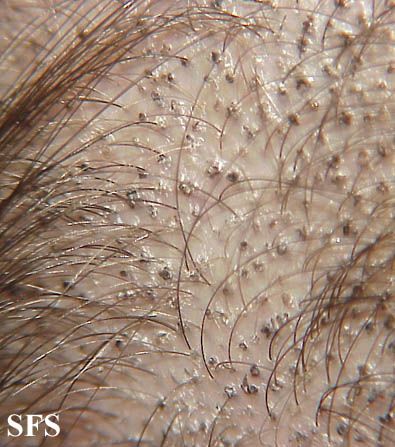 A sample of fungus on your skin can also be tested in fungal culture to see if you have the condition.
A sample of fungus on your skin can also be tested in fungal culture to see if you have the condition.
Your doctor may also use a Wood’s lamp to look at your skin. This special machine, which uses ultraviolet light, is kept 4-5 inches from your skin. If yeast is present, the affected skin will be yellow or green under light.
Treatment How is linoleum used?
If your symptoms are not severe, you can choose to treat your condition at home. Over-the-counter antifungal creams or shampoos can be effective at clearing the infection.Examples of over-the-counter medications that can be used to treat a type of tinea include:
clotrimazole (Lotrimin AF, Mycelex)
miconazole (Monistat, M-Zole)
- Selenium Sulfide (Selsun Blue Shampoo)
- terbinafine (Lamisil)
- If you see your doctor for spinal fever, your doctor may prescribe different medications, such as topical creams, that you can apply directly to your skin. Examples:
- ciclopirox (Loprox, Penlac)
ketoconazole (Extina, Nizoral)
- Your doctor may also prescribe tablets for the treatment of tinea-spirilol, including:
- fluconazole (Diflucan)
itraconazole (Onmel, Sporanox)
- ketoconazole
- Outlook How long does it take to get your skin back to normal?
- If you have been diagnosed with Tinea versicolor, treatment will improve your long-term prospects.
 However, even after the infection has cleared, your skin may remain discolored for several weeks or months after treatment. Your infection may also return when the weather gets warmer and wetter. If your condition returns, your doctor may prescribe medications once or twice a month to prevent symptoms.
However, even after the infection has cleared, your skin may remain discolored for several weeks or months after treatment. Your infection may also return when the weather gets warmer and wetter. If your condition returns, your doctor may prescribe medications once or twice a month to prevent symptoms.
Prophylaxis Can’t tinea versicolor be prevented?
It is difficult to prevent recurrence of this condition. If you have been diagnosed with tinea versicolor and have successfully treated it, you can take steps to prevent future infections.These include:
avoid excessive heat
avoiding sunburn or excessive sun exposure
- avoiding excessive sweating
- You can also help prevent craniocerebral syringe by using prescription skin treatments during the year most susceptible to it.
- Natural Remedies Q&A
Q:
What natural remedies have been proven to help various forms?
A:
Tinea versicolor is a common fungal skin infection that can be easily treated by your doctor. There are also steps you can take to help, including:
There are also steps you can take to help, including:
• Avoid excessive heat and sweating.
• Use selenium anti-dandruff shampoo every few weeks.
Other natural or non-drug remedies have not been well studied or clearly demonstrated to be effective for this purpose.
Healthline Medical TeamAnswers represents the opinions of our medical experts. All content is strictly informative and should not be construed as medical advice.
définition de% d0% 9e% d1% 82% d1% 80% d1% 83% d0% b1% d0% b5% d0% b2% d0% b8% d0% b4% d0% bd% d1% 8b% d0 % b9_% d0% bb% d0% b8% d1% 88% d0% b0% d0% b9 et synonymes de% d0% 9e% d1% 82% d1% 80% d1% 83% d0% b1% d0% b5% d0% b2% d0% b8% d0% b4% d0% bd% d1% 8b% d0% b9_% d0% bb% d0% b8% d1% 88% d0% b0% d0% b9 (russe)
% d0% 9e% d1% 82% d1% 80% d1% 83% d0% b1% d0% b5% d0% b2% d0% b8% d0% b4% d0% bd% d1% 8b% d0% b9_% d0 % bb% d0% b8% d1% 88% d0% b0% d0% b9: définition de% d0% 9e% d1% 82% d1% 80% d1% 83% d0% b1% d0% b5% d0% b2% d0% b8% d0% b4% d0% bd% d1% 8b% d0% b9_% d0% bb% d0% b8% d1% 88% d0% b0% d0% b9 et synonymes de% d0% 9e% d1% 82 % d1% 80% d1% 83% d0% b1% d0% b5% d0% b2% d0% b8% d0% b4% d0% bd% d1% 8b% d0% b9_% d0% bb% d0% b8% d1 % 88% d0% b0% d0% b9 (russe)
Contenu de sensagent
- définitions
- synonymes
- antonymes
- encyclopédie
- definition
- synonym
dictionnaire et traducteur pour sites web
Alexandria
Une fenêtre (pop-into) d’information (contenu principal de Sensagent) est invoquée un double-clic sur n’importe quel mot de votre page web. LA fenêtre fournit des explanations et des traductions contextuelles, c’est-à-dire sans obliger votre visiteur à quitter votre page web!
LA fenêtre fournit des explanations et des traductions contextuelles, c’est-à-dire sans obliger votre visiteur à quitter votre page web!
Essayer ici, télécharger le code;
Solution commerce électronique
Augmenter le contenu de votre site
Ajouter de nouveaux contenus Add à votre site depuis Sensagent par XML.
Parcourir les produits et les annonces
Obtenir des informations en XML pour filtrer le meilleur contenu.
Indexer des images et définir des méta-données
Fixer la signification de chaque méta-donnée (multilingue).
Renseignements suite à un email de description de votre projet.
Lettris
Lettris est un jeu de lettres gravitationnelles proche de Tetris. Chaque lettre qui apparaît descend; il faut placer les lettres de telle manière que des mots se forment (gauche, droit, haut et bas) et que de la place soit libérée.
boggle
Il s’agit en 3 minutes de trouver le plus grand nombre de mots possibles de trois lettres et plus dans une grille de 16 lettres.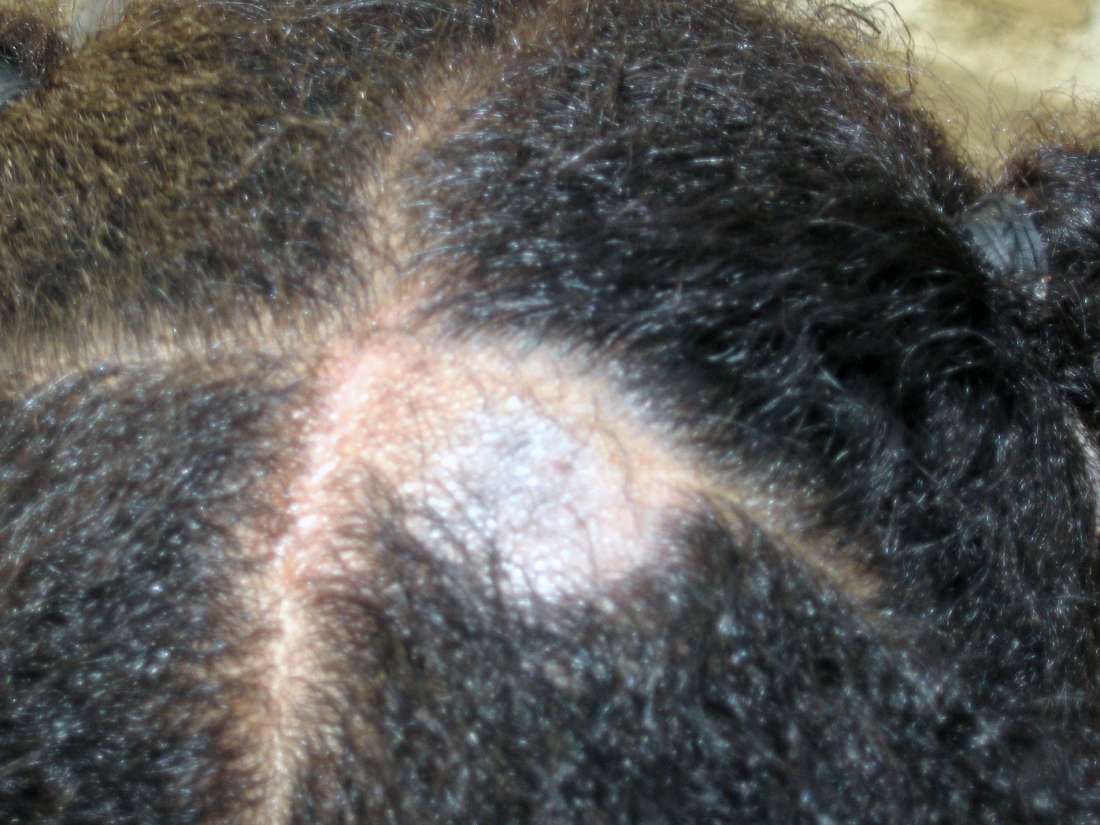 Il est aussi possible de jouer avec la grille de 25 cases. Les lettres doivent être adjacentes et les mots les plus longs sont les meilleurs. Participer au concours et enregistrer votre nom dans la liste de meilleurs joueurs! Jouer
Il est aussi possible de jouer avec la grille de 25 cases. Les lettres doivent être adjacentes et les mots les plus longs sont les meilleurs. Participer au concours et enregistrer votre nom dans la liste de meilleurs joueurs! Jouer
Dictionnaire de la langue française
Principales Références
La plupart des définitions du français sont proposées par SenseGates et comportent un approfondissement avec Littré et plusieurs auteurs techniques specialisés.
Le dictionnaire des synonymes est surtout dérivé du dictionnaire intégral (TID).
L’encyclopédie française bénéficie de la license Wikipedia (GNU).
Traduction
Changer la langue cible pour obtenir des traductions.
Astuce: parcourir les champs sémantiques du dictionnaire analogique en plusieurs langues pour mieux apprendre avec sensagent.
9427 visiteurs en ligne
calculé en 0,062s
allemand
anglais
arabe
bulgare
chinois
coréen
croate
danois
espagnol
espéranto
estonien
finnois
français
grec
hébreu
hindi
hongrois
islandais
indonésien
italien
japonais
letton
lituanien
malgache
néerlandais
norvégien
persan
polonais
portugais
roumain
russe
serbe
slovaque
slovène
suédois
tchèque
thai
turc
vietnamien
allemand
anglais
arabe
bulgare
chinois
coréen
croate
danois
espagnol
espéranto
estonien
finnois
français
grec
hébreu
hindi
hongrois
islandais
indonésien
italien
japonais
letton
lituanien
malgache
néerlandais
norvégien
persan
polonais
portugais
roumain
russe
serbe
slovaque
slovène
suédois
tchèque
thai
turc
vietnamien
90,000 White spots on the child’s body
Main causes
Any of the diseases is collectively called hypopigmentation – discoloration of the skin, nails and hair, which occurs due to a lack of a pigment called melanin.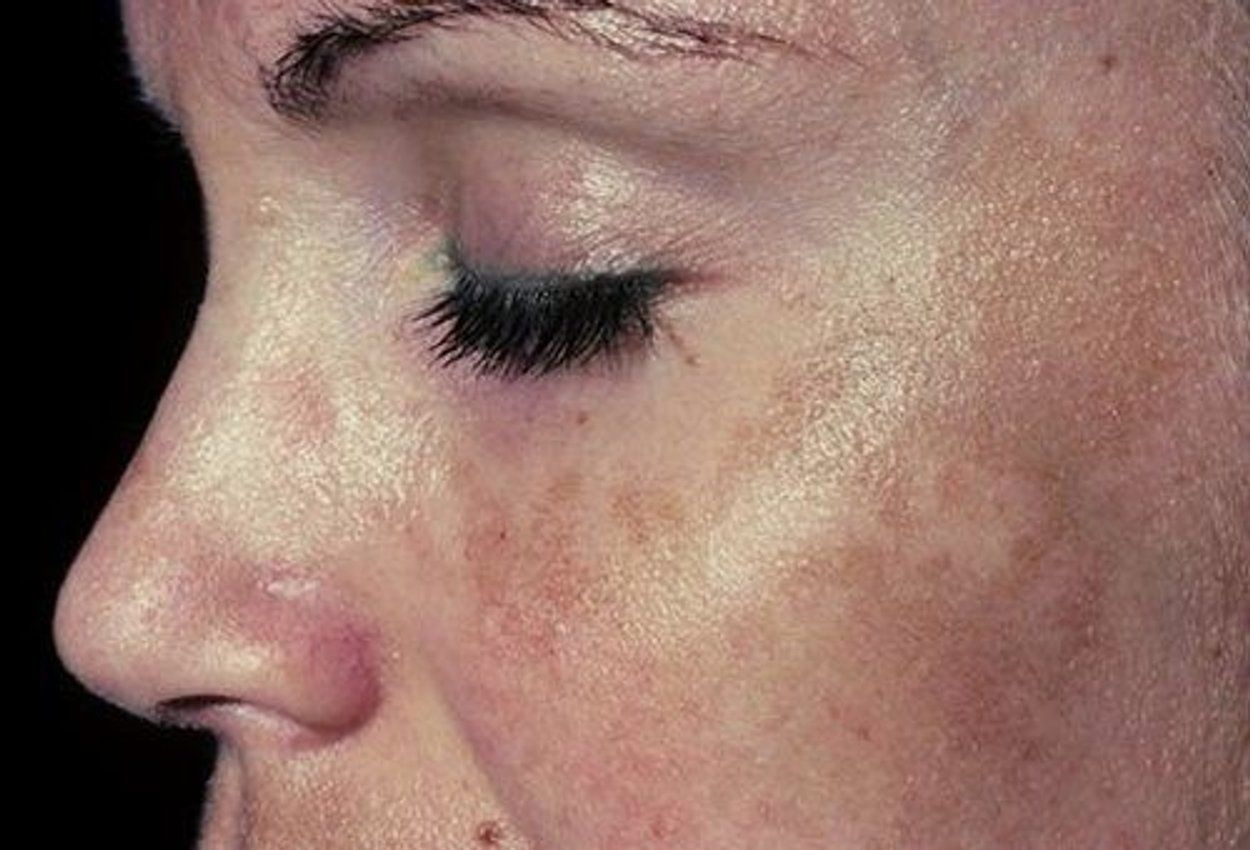 One of the most common diseases that is accompanied by the appearance of white spots on the skin in infants is Vitiligo (loss of melanin). The causes of the origin of this disease are unknown, the ways of its treatment also do not give the desired result. The only thing that can be done is to try to improve the appearance of the skin in various ways, which we will talk about next.
One of the most common diseases that is accompanied by the appearance of white spots on the skin in infants is Vitiligo (loss of melanin). The causes of the origin of this disease are unknown, the ways of its treatment also do not give the desired result. The only thing that can be done is to try to improve the appearance of the skin in various ways, which we will talk about next.
Pityriasis versicolor
The second most common cause of white spots is fungi, which are in the body of every person.However, under favorable conditions (moisture and heat), the number of fungi begins to increase, as a result of which red-brown or white spots appear on the skin. The causes of infection are excessive sweating, warm, humid climate. For treatment, you can use antifungal drugs, for example, “Clotrimazole” or “Terbinafine”.
Important! Only a professional dermatologist can make the correct diagnosis, so you should not engage in experiments on the child and his health by self-medication.
Idiopathic teardrop-shaped hypomelanosis
Symptoms:
- Small white spots exposed to the sun.
- The skin becomes smooth, but it is able to flake off.
Important! This disease is more common among women with fair skin, the cause of its occurrence is unknown, doctors suggest that it is one of the symptoms of aging.
White lichen
With this disease, the skin also begins to change its color.White lichen is most often seen in adolescents and children living in warm climates. Whitish spots become dry and scaly, the cause is not yet known.
Non-pigmented nevus
In simple terms, a non-pigmented nevus is a birthmark that poses a threat to human life and health, since the development of melanoma is a severe malignant tumor that occurs on the skin.
Other causes
It is worth noting that white spots can appear on the child’s body due to improper or poorly balanced nutrition.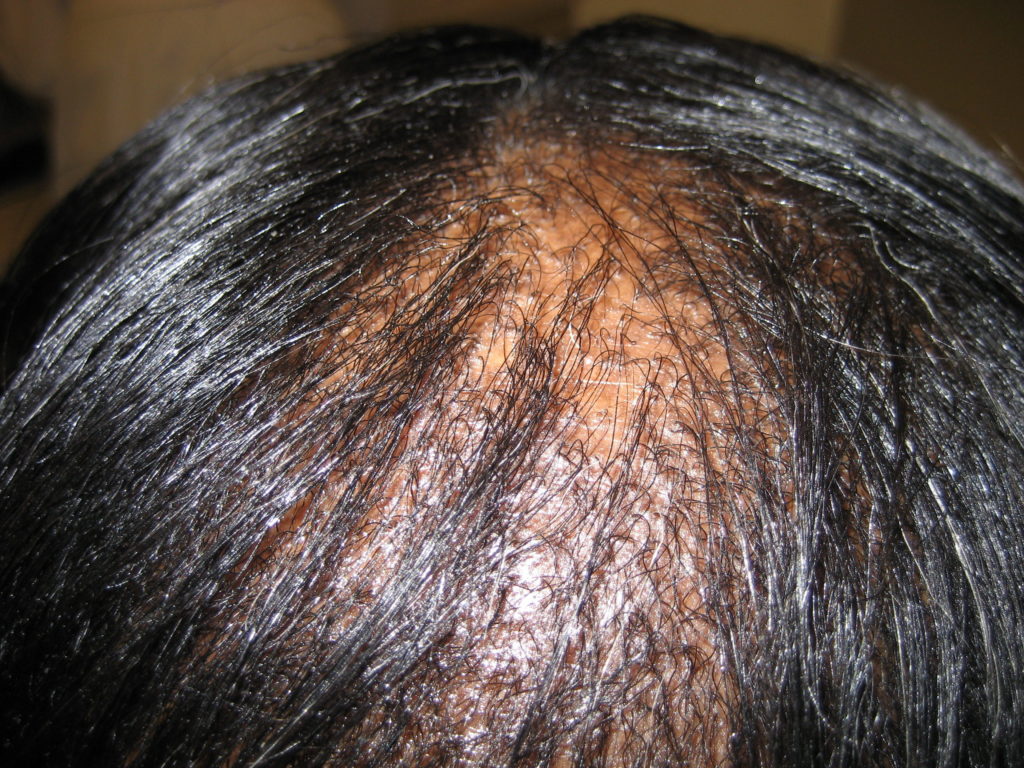 Due to the lack of vitamins and certain pigments, white marks may appear on the human body, which do not pose a threat and disappear with the right diet or taking bioactive supplements. In addition, the causes of white spots can be:
Due to the lack of vitamins and certain pigments, white marks may appear on the human body, which do not pose a threat and disappear with the right diet or taking bioactive supplements. In addition, the causes of white spots can be:
- Psoriasis is a chronic non-infectious disease.
- Leucoderma is a disease that can appear after syphilis.
Important! The diseases mentioned earlier are extremely rare in infants, but it is necessary and important to know about them, since it concerns health.
Manifestations in children
As for the skin of newborns, white spots on it may appear due to one of these diseases:
- Tumor sclerosis – white spots, the radius of which reaches 1.5 centimeters. The disease can result in more serious pathologies, for example, epilepsy, mental retardation, or damage to internal organs.
- Hypomelanosis – may appear after suffering a severe infectious disease, arises from dyschromia of the upper layer of the skin.

Possible types of white spots
White spots appeared on the child’s cheek, which can be:
- Defeats with a fungal virus. White patches on the cheeks appear after a yeast parasite. A parasite caught on the skin produces substances that penetrate directly into the layers of the epidermis, where they destroy melanocytes. With such a lesion, the spots will be round or oval. Such a lesion is called pityriasis. The disease is not contagious, it occurs in hot weather or in humid climates.
- Lichen Gibert appears as a result of infection with the herpes virus. This type of lichen is not contagious either. The affected areas of the skin are rounded, small in size, but with clear boundaries. Does not deliver painful sensations. Its localization is in natural skin folds. It can appear after severe infectious diseases, that is, with a reduced state of immunity.
- The next representative of a fungal infection is white lichen. In this case, white-pink areas appear, which can then lose their pink tint.
 The inflammation is itchy and itchy. Treatment sometimes lasts for several weeks, and sometimes for a couple of months. Then the color of the skin returns to normal.
The inflammation is itchy and itchy. Treatment sometimes lasts for several weeks, and sometimes for a couple of months. Then the color of the skin returns to normal. - Vitiligo can appear in young people under 20 years of age. It is not easy to get rid of this disease, because the process is very long.
- A disease called “tumor sclerosis” is considered a dangerous pathology. With this pathology, there is a lag in the development of the child, both physically and mentally. The development of internal organs is also lagging behind.The patient may have epileptic seizures. A sign of the appearance of such a disease is large spots up to 5 cm, and they can be found not only on the face, but also on the arms and legs.
- Nevus is pale, fast-growing. Often confused with a wart or birthmark. It can transform into a malignant formation.
Not all discolored spots that appear are a health hazard. To be sure of this, you should consult a doctor.
What is Vitiligo?
As mentioned earlier, the most common disease that is accompanied by the appearance of white spots on the skin is Vitiligo.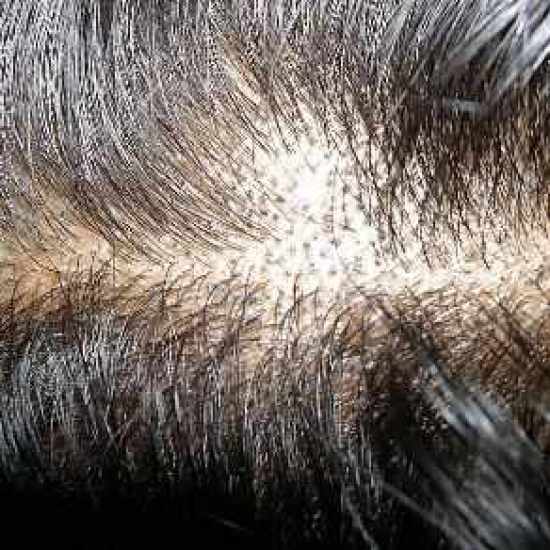 As a result of this disease, spots of various shapes and sizes appear on the skin of adults and children, the cause of which is the absence of melanin. As a result, the skin is not protected from sun exposure and there is a risk of burns.
As a result of this disease, spots of various shapes and sizes appear on the skin of adults and children, the cause of which is the absence of melanin. As a result, the skin is not protected from sun exposure and there is a risk of burns.
Manifestation of Vitiligo:
- On the arms and face, in the elbows and groin.
- Spots appear in separate areas or create groups that merge into a single spot that occupies most of the body.
- The disease does not manifest itself on the feet and palms.
- If spots appear on the head, the hair also loses color.
Causes of the disease:
- Heredity.
- Impaired liver function.
- Diseases of the thyroid gland and endocrine system.
- The pituitary gland is not working properly.
- Disease of the gastrointestinal tract.
- Kidney and adrenal disease.
- Stress and infectious diseases.
- Immune system malfunctions.
- Impaired balance of vitamins and minerals.

Very often Vitiligo is confused with other diseases, namely:
- Leucoderma.
- Ringworm.
- Pityriasis versicolor.
Important! Only a dermatologist can determine the cause of stains and the methods of their treatment, so you should not postpone your visit to the doctor.
Precautions:
- Do not sunbathe with a sweaty body.
- It is forbidden to stay in drafts for a long time.
- The use of air conditioners and fans is not advisable.
- Do not stay in high humidity air for a long time.
Important! In general, any violation of the skin is a health problem, however, Vitiligo is not an infectious disease, therefore it does not pose a danger to others.
The reasons for the appearance of white areas on the skin
Based on the above reasons, due to which a white spot appears, it is impossible to independently determine.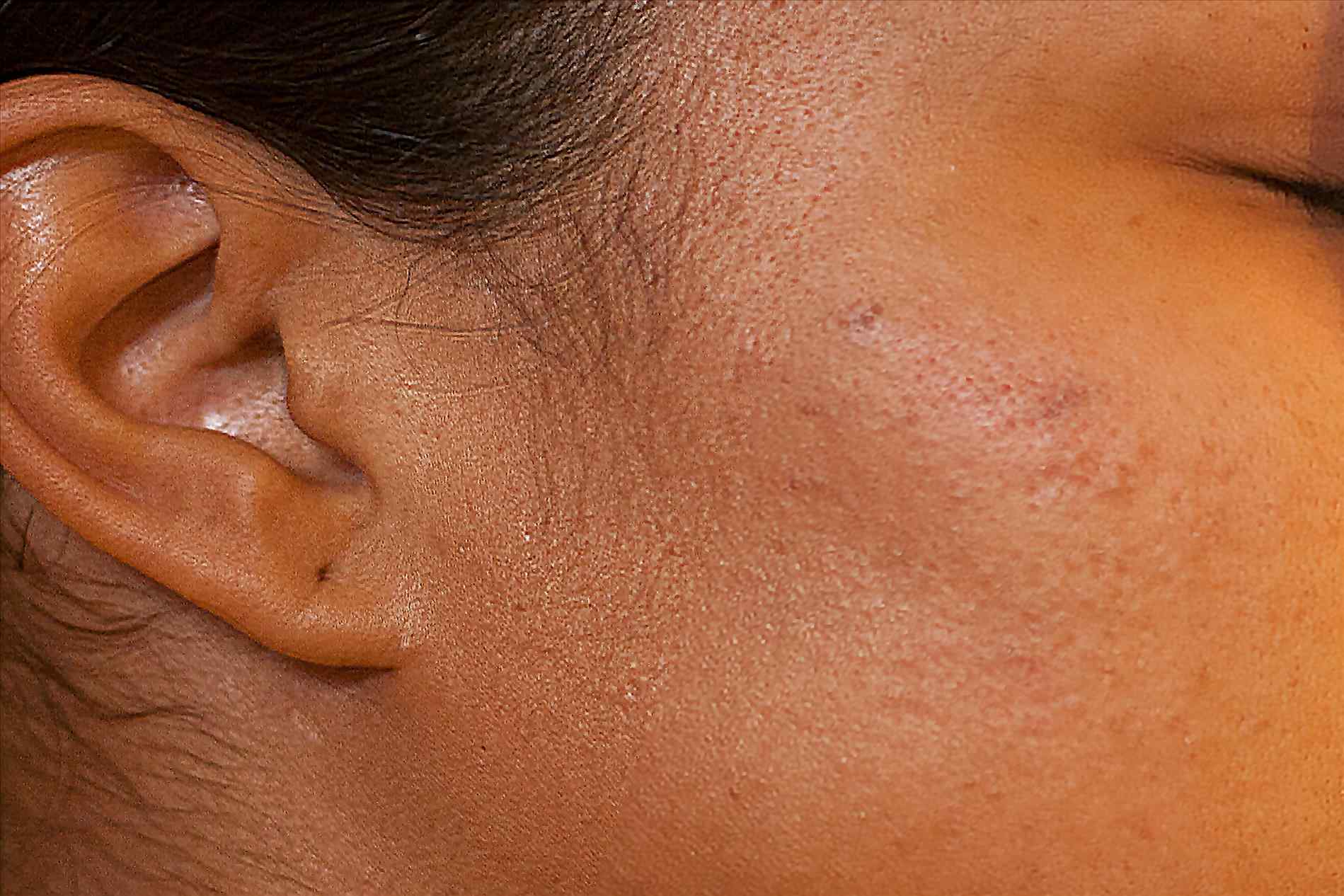 These reasons will be determined by the doctor.
These reasons will be determined by the doctor.
The thing is that spots can be caused by:
- fungal infections. Most often, such areas can peel off;
- lesion with temporary dermatitis. Such a lesion can spread not only to the facial skin, but also to occur on the arms and legs;
- The lack of melanin in the dermis explains the discoloration of some areas of the skin.
White spots may appear for reasons of a different nature.
That is, their appearance can be provoked as a result of:
- Appeared nervous disorder.
- Emotional upheavals.
- Hormonal disruptions.
- Occur as a result of the intensive growth of the child.
In general, the appearance of white spots on the face should not be of particular concern to parents. Many babies calmly tolerate their appearance. And the treatment goes quickly.
The main task of parents is to seek medical attention in time.Do not self-medicate.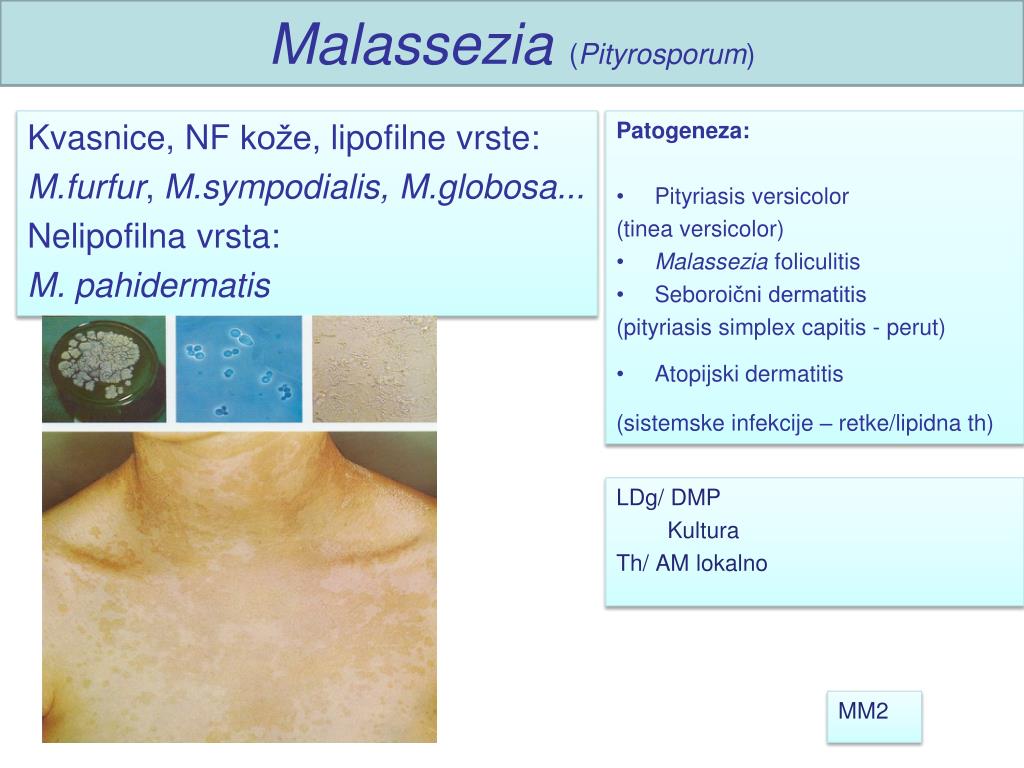 In order for the treatment to bring the expected effect, a diagnosis is required. Therefore, it is necessary to accurately determine the parasite if it is the cause of the disease. And this can only be done in a laboratory.
In order for the treatment to bring the expected effect, a diagnosis is required. Therefore, it is necessary to accurately determine the parasite if it is the cause of the disease. And this can only be done in a laboratory.
Methods of treating Vitiligo
Our ancestors found several ways to combat Vitiligo, however, it is impossible to completely cure this disease, since the cause of its occurrence remains unclear. At the same time, stains can be easily masked, so that the feeling of discomfort will disappear.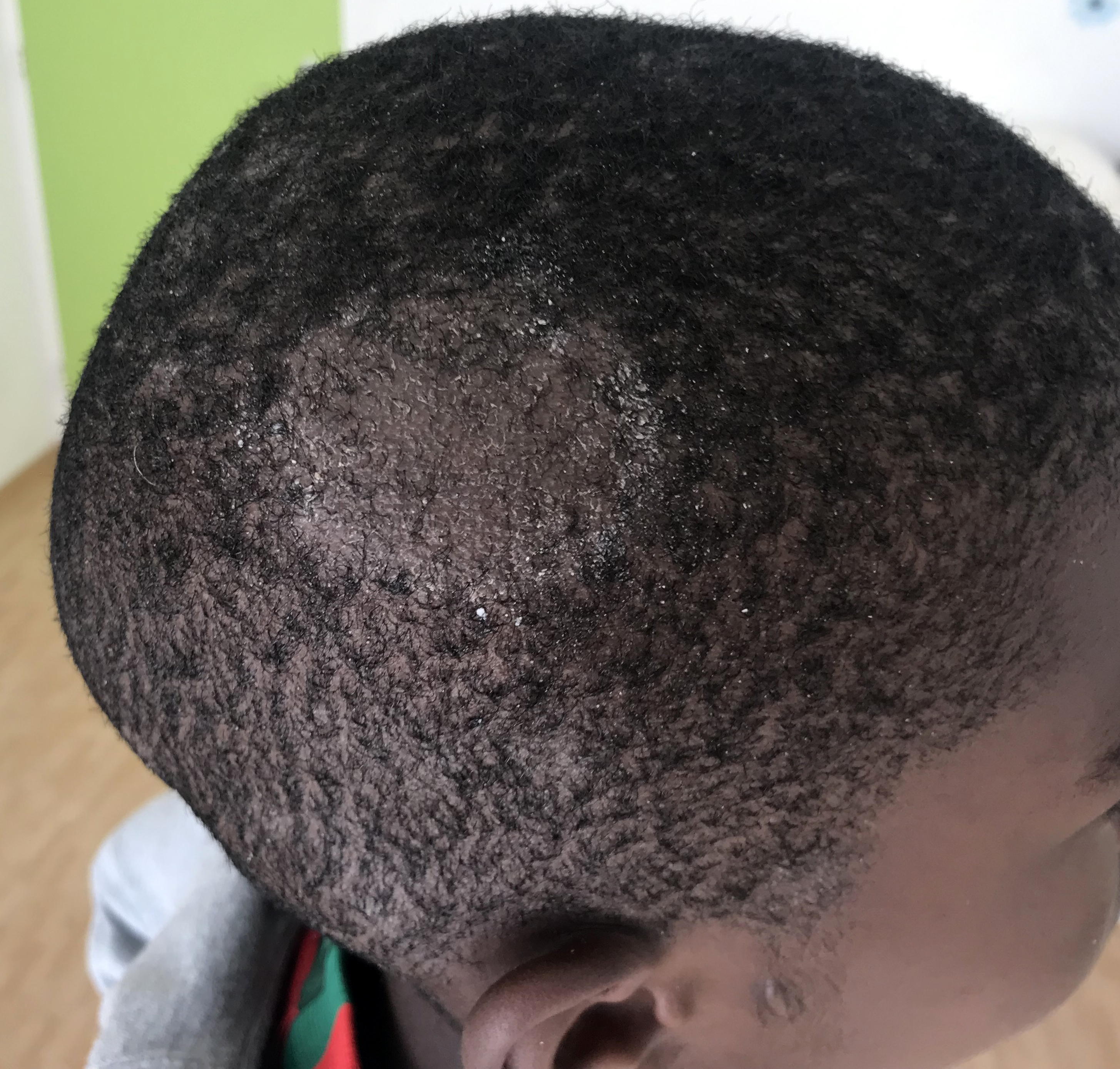 Means for the treatment of the disease:
Means for the treatment of the disease:
- Duckweed.
- Parsley.
- Dill herb.
- St. John’s wort herb.
It is enough to choose one of the plants and apply its extract to the depigmented areas. These plants contain furocoumarins, which increase the production of melanin and restore normal skin color.
Important! At the same time, it is believed that these procedures increase the likelihood of skin cancer. What to believe and what not – everyone decides for himself.
There are various causes of hypopigmented spots on a child’s face, ranging from conditions that resolve on their own within a few weeks to diseases that can remain for life.
Causes of white spots on a child’s face
White spots can be caused by the following skin conditions:
Milia
Milia is also called milky spots. These tiny white bumps usually appear on the face, and rarely on the upper torso or limbs. Although milia can be seen at any age, it is common in newborns.
Although milia can be seen at any age, it is common in newborns.
Causes and diagnosis of milia
Milia occurs due to the trapping of keratin (skin flakes) under the surface of the skin. If there is no improvement after a couple of weeks, you should see a doctor. Diagnosis is by visual examination and no tests are required.
Prevention and treatment of milia
Prevention of milia does not exist, it often disappears within a few weeks or months.There is no need to treat milia in children.
How can you reduce milia at home?
- Wash your baby’s face daily with mild soap and water.
- Pat dry your face after washing.
- Take care that the child does not scratch the mile – to avoid skin damage and infection.
- Do not use lotions or oils on your face.
Note: Some may confuse baby acne or Epstein pearls with mile.However, acne can cause red bumps and pustules on the face. Epstein pearls are small, white-yellow cysts that often resemble a mile, but they appear on the palate and gums.
Pitiriasis white (lichen white)
Pitiriasis white is a self-limiting skin condition that causes dry, thin, scaly and pale patches on the face. It is common in children and adolescents and is considered a type of eczema or dermatitis.
The name of this condition comes from the characteristic appearance of the skin.
Causes of white pityriasis
The causes of white pityriasis have not yet been clarified. However, atopic dermatitis and dry skin often coexist with it. Exposure to the sun can make it more visible due to the sunburn of the surrounding skin.
Supposed causes such as insufficient or excessive bathing, low serum copper levels, ultraviolet radiation, or Malassezia yeast have not yet been proven to cause hypopigmentation.
Symptoms and signs of white pityriasis
One or more white spots, ranging from 0.5 to 5 cm in diameter, are a characteristic sign of lichen lichen. It can also cause mild itching in some children.
Diagnosis of pityriasis versicolor
The condition can be diagnosed by a physical examination by a doctor. A skin biopsy may show mild spongiotic (fluid accumulation between cells) dermatitis with reduced melanin pigment.A skin scraping may also be taken to rule out a yeast infection.
Treatment for white lichen
Treatment is not recommended in asymptomatic cases. Moisturizers are good for dry skin, while mild hydrocortisone (topical steroid) creams can help reduce itching and redness in situ.
Tacrolimus ointment, pimecrolimus cream, and calcineurin inhibitors have been shown to be effective in the treatment of lichen lichen.
The appearance of the skin may gradually return to normal over several months or two to three years.
Prevention of white lichen
Limited exposure to the sun can help reduce the risk of developing this condition.
Vitiligo
Vitiligo is skin depigmentation due to the loss of melanocytes, which are cells that produce a skin pigment called melanin. Vitiligo can affect both exposed to the sun and unprotected areas of the body. Also, with the disease, depigmentation of the lips and gray hair is often observed.
Causes of Vitiligo
The exact causes of Vitiligo are unknown.The disease may be due to dysfunction or loss of melanocytes (cells that produce the melanin pigment) that give the skin its color. This could be due to genetic factors or an autoimmune condition in which the immune system attacks melanocytes.
Vitiligo can occur at any age, but the onset is common in children and adolescents.
Diagnosis of Vitiligo
Vitiligo can be diagnosed by physical examination. Rarely, a skin biopsy is done to confirm the absence of melanocytes (pigment cells) on the skin.Thyroid disease and diabetes are being tested, as this can increase the risk of vitiligo in many people.
Vitiligo treatment
Mild vitiligo may not require treatment: the spots will disappear over time. However, there are several treatments available to help make your skin tone even.
Corticosteroid creams, photochemotherapy (PUVA), narrow-band ultraviolet B (UVB) therapy, and depigmentation are several treatments. Using sunscreen can reduce tanning around vitiligo spots, while concealers can hide white spots on the skin.
Although vitiligo can be unpleasant for many people due to its appearance, it is not a medical hazard. Vitiligo is not an infection, skin cancer, or a contagious disease.
Shingles
Shingles is a fungal infection of the skin that causes lighter or darker spots on the skin. The disease occurs at any age, but it is most often seen in adolescents and young adults.
Causes of Shingles
Shingles is caused by a yeast that is usually present on the skin.Their excessive growth under the influence of environmental factors can lead to the appearance of spots on the skin. Malnutrition and excessive sweating (hyperhidrosis) are also fraught with yeast growth.
Note: shingles cannot be spread from one person to another (not contagious) as most people have Malassezia yeast on their skin. This condition is not caused by poor hygiene.
Weak immune systems, oily and damp skin, or hot and humid climates can increase the risk of contracting shingles.Children taking corticosteroid medications may also be susceptible to this condition.
Signs and symptoms of shingles
Although white patches can appear on the face, they are common on the chest, back, and forearms. The spots can be pink or light brown with scales. Skin changes are usually limited to the outer layer of the skin and often do not cause any pain or itching.
Diagnosis of herpes zoster
A physical examination is sufficient to diagnose herpes zoster.In rare cases, doctors may collect a skin scraping to confirm the diagnosis.
Treatment for shingles
Selenium sulfide shampoo is the main treatment. If the condition persists, antifungal or anti-dandruff shampoos can be used. The skin can get better in a short period of time in many children. However, it can take several months to get an even skin tone. To prevent recurrence of the disease, monthly use of shampoo is recommended.
Idiopathic teardrop hypomelanosis
Idiopathic teardrop hypomelanosis (IGH) is a skin condition with small, white oval spots.
IGH is more common in older fair-skinned people than in children and often goes unnoticed.
Causes of idiopathic teardrop hypomelanosis
The exact cause of hypomelanosis is unknown. While this has not yet been proven, it is speculated that it may be related to sun exposure.
Diagnosis of idiopathic teardrop hypomelanosis
A physical examination is sufficient to determine the condition. Biopsy specimens are rarely taken. There is usually a decrease in the number of melanocytes in the affected areas, although they are not completely absent, as in vitiligo.
Treatment of idiopathic teardrop hypomelanosis
IGH spots are benign and do not require medical treatment. Most of the procedures are aimed at improving the cosmetic appearance of the skin.
Home remedies may include regular use of sunscreen and physical barriers to prevent sun exposure, as these can promote or accelerate hypomelanosis.
References:
- Milia; Healthychildren; The American Academy of Pediatrics
- Milia; MedlinePlus; The United States National Library of Medicine
- Pityriasis alba; DermNet NZ; The New Zealand Dermatological Society
- Donald N.Givler, et al .; Pityriasis Alba; The United States National Library of Medicine
- Pityriasis alba; C.S. Mott Children’s Hospital; The University of Michigan 6. Pityriasis alba; The Australasian College of Dermatologists (ACD)
- Vitiligo; The mission of the National Institute of Arthritis and Musculoskeletal and Skin Diseases
- Vitiligo; National Health Service
- Diagnosing Vitiligo; NYU Langone Medical Center
- Vitiligo: Diagnosis and Treatment; The American Academy of Pediatrics
- Tinea Versicolor; Harvard Medical School
- Pityriasis Versicolor; National Health Service
- Falon Brown and Jonathan S.Crane; Idiopathic guttate hypomelanosis; The United States National Library of Medicine
- Idiopathic guttate hypomelanosis; DermNet NZ; The New Zealand Dermatological Society
Pityriasis versicolor – signs, symptoms, causes, diagnosis and treatment of the disease – Food raw materials
- Pityriasis versicolor: symptoms, causes, treatment
- Pityriasis versicolor – symptoms, treatment, causes of illness, first signs
- Pityriasis versicolor versicolor – SPB GBUZ “Dermatovenerologic dispensary No. 4”
- Pityriasis versicolor in a child (multicolored): photos, symptoms and treatment
- Lichen in cats: what to do? – Animal Health
- Antimycotic Drugs in the Treatment of Pityriasis versicolor | Taha T.V., Nazhmutdinova D.K.
- Pityriasis versicolor treatment
- Tinea Versicolor Condition, treatment and images for parents – Overview
- Tinea Versicolor | DermNet NZ
- Versicolor versicolor (versicolor versicolor) | Cedars Sinai
- Tinea Versicolor – NHS
- Shingles versicolor
- Tinea Versicolor | Children’s Hospital CS Mott
- What is herpes zoster? Symptoms, causes, treatment and prevention
Pityriasis versicolor: symptoms, causes, treatment
Pityriasis versicolor is an infectious dermatological disease that affects the upper layers of the skin.It is not very dangerous, nor is it contagious and does not cause serious complications. It also has other names – tinea versicolor versicolor.
Symptoms
The general symptoms of pityriasis versicolor, which do not depend on the form of the disease, look like this:
- Scarlet asymmetric spots located on the back, shoulders, abdomen, head and neck. The sizes of the spots are different, they can cover quite large areas of the skin.
- Brown or yellow spots, also different in size – with uneven edges, often merging into more extensive formations.
- Severe flaking of tissues in the affected areas.
- Itching sensation. But it is important to know that it does not always occur – only in those cases when pityriasis versicolor is accompanied by a secondary infection.
- Lack of sunburn on sore areas of the body. This is due to the fact that the fungus that infects the skin disrupts the work of melanocytes.
There are other symptoms of pityriasis versicolor – they are associated with a specific form:
- Follicular.It is most often associated with discomfort and suggests the presence of ulcers, various papules and rashes.
- Inverted. With this form, the spots are located in the folds of the skin – armpits, in the groin area.
- Erythematosquamous. This form is characterized by light spots with no signs of inflammation. Most often, formations are observed on the back, abdomen and chest. Children can develop pityriasis versicolor on the head.
Since many people are not concerned about the symptoms of the disease, they may not pay attention to the disease for years.As a result, it becomes chronic: it periodically disappears, then, under the influence of negative factors, it is activated again.
Important! If signs of pityriasis versicolor appear in a woman during pregnancy, this does not pose any danger to the baby. But you cannot start treatment before childbirth, since pills that treat diseases are just undesirable for the development of the fetus.
In a child
Pityriasis versicolor in children occurs only when personal hygiene is not followed or skin care is improper.As a rule, up to 10 years, the body itself is able to cope with pathogenic organisms, if the barrier functions of the skin are not disturbed. But after the age of ten, hormonal changes begin, due to which the susceptibility to pathogenic fungi increases as a result of various negative factors – children can get sick on a par with adults.
The course of the disease does not depend on age – both in small patients and in large patients it is the same.
For an adult
The disease is most common in people between the ages of 10 and 60.As a rule, it does not cause strong discomfort, but is associated only with negative aesthetic consequences. After 60 years, such age-related changes in the skin occur, due to which it becomes less susceptible to the causative agent of the disease.
Reasons
Pityriasis versicolor is caused by the same bacteria and fungi that live on our skin and are considered part of its normal microflora. However, under the influence of various negative factors, the fungus can acquire pathogenic properties.These factors include the following:
- Excessive sweating. In another way, it is called hyperhidrosis.
- Disorders in the work of the sebaceous glands.
- Severe and regular overheating – being in hot rooms, wearing too warm clothes.
- Changes in sweat composition that can be associated with illness, taking certain medications.
- Various diseases of internal organs, including autoimmune diseases.
- Hormone surges during pregnancy, medication, menopause.
- Poor quality synthetic clothing.
- High acidity of the skin.
The development of pityriasis versicolor most often occurs against the background of reduced immunity, therefore, there is some regularity regarding the time of its appearance. Most often, people encounter such a problem in the autumn-spring period, when there is not enough vitamins, sunlight and physical activity.
Diagnostics
Since there are quite similar problems, the diagnosis of pityriasis versicolor is carried out not only at the examination level, but also using special tests:
For a complete picture, the patient is assigned general blood and urine tests.
Treatment
For the treatment of pityriasis versicolor, tablets (immunomodulators and antifungal agents, vitamins) are used, as well as topical ointments. In some cases, antifungal shampoos are prescribed. If the patient has an itchy sensation, antihistamines are prescribed.
Now in pharmacies there are a lot of drugs intended for the treatment of pityriasis versicolor, but it is important to understand that they all require individual selection.In no case do not self-medicate – it either will not give an effect, or will only delay the inevitable trip to the dermatologist. Better make an appointment with a specialist at Medicina JSC – dermatologists with extensive experience work in our clinic in Moscow. They will quickly make an accurate diagnosis and select an effective treatment regimen for you.
As for traditional methods, it is recommended to discuss them with your doctor. As a rule, when using modern and effective means, they are useless, and therefore simply waste the time and energy of patients.
Prevention
Now the prevention of pityriasis versicolor is relevant for all people. It includes such recommendations:
- Fight hyperhidrosis (excessive sweating) – take a shower more often, put on clean clothes, use additional products: deodorants, special creams, powders.
- Dress for the weather and avoid overheating in different situations.
- Do not injure the skin by too frequent washing, regular use of regular soap, scrubs, peels.
- Observe the rules of personal hygiene – including not using other people’s hygiene products.
- Wear comfortable, breathable clothing primarily made from natural fabrics, especially close-fitting items.
- Maintain immunity: lead a healthy lifestyle, give up bad habits, eat right. After consultation with an endocrinologist, many people are advised to take additional vitamin complexes.
- Monitor your health: stop acute conditions in time, treat chronic diseases.
- Use cosmetics wisely – they must suit your skin type and your needs. If it is difficult to understand the composition of numerous products, it makes sense to go for a consultation with a beautician and choose individual care for the skin of the face, body and head.
There is nothing specific in the prevention of pityriasis versicolor – it implies a responsible attitude towards one’s health, which is necessary for every person and in any situation.
FAQ
Is pityriasis versicolor spread from person to person?
The disease is not transmitted by household or other means, so the patient does not need isolation.
What causes pityriasis versicolor?
The reason is that fungi and bacteria that are normally found on our skin, with weakening of the immune system, become pathological. That is, everyone can face such a problem.
How to treat pityriasis versicolor?
Pityriasis versicolor on the head is treated with special ointments, shampoos and pills. All the same applies to other localizations, only shampoo is not used. Traditional methods are not suitable for these purposes – only special medicines selected individually by a dermatologist.
Pityriasis versicolor – symptoms, treatment, causes of the disease, the first signs
Description
Pityriasis versicolor (pink) versicolor is a fungal disease of the skin.It manifests itself most often in the summer, when the activity of the sun’s rays is highest.
Pityriasis versicolor is caused by the yeast-like fungus Pityrosporum orbiculare. The fungus is conditionally pathogenic, that is, it causes disease only in vulnerable people, or when it is overly colonized with spores. In healthy people, it can be found in the folds of the skin, on the scalp, and in the armpits.
Pityriasis versicolor is found most often in young people and children.Factors that contribute to the appearance of pityriasis versicolor:
- Increased sweating;
- Hormonal diseases;
- Chronic diseases of the gastrointestinal tract;
- Genetic predisposition to fungal diseases.
The pathogen is transmitted by household contact from an infected person through bed linen, towels, personal hygiene items.
Symptoms
Photo: vesty.co.il
The clinical picture of pityriasis versicolor usually develops a couple of weeks after infection.In some cases, the infection lurks for many months and manifests itself against the background of a weakened immune system after a cold or other acute illness. Thus, the manifestations of pityriasis lichen are directly dependent on chronic diseases, the frequency of their exacerbations and the general level of immunity.
Pityriasis versicolor is manifested by the development of rashes on various parts of the body and are accompanied by itching. Typical spots for blemishes are the groin, chest, and upper back. The color of the spots varies from whitish (like vitiligo) to yellowish.Usually, the rash does not protrude above the surface of the skin. In the center of the spots, you can notice increased keratinization of the skin. The edges of the rash are smooth. Sizes from a few millimeters to tens of centimeters in especially advanced cases. Pityriasis lichen is characterized by seasonality, that is, an exacerbation with increased itching and an increase in spots in size is observed in spring and autumn.
The development of Pityriasis versicolor includes the following stages:
- Small spots of pink color that gradually turn yellow or pale;
- The skin in the center of the spots begins to peel off, gradually passing over the entire surface of the rash;
- Itching of mild intensity joins the peeling, which does not bother all the time;
- Skin cells responsible for the production of coloring pigment completely lose their function, which is why the skin at the site of the rash does not return to its original color even with temporary healing;
- In the absence of adequate treatment, the spots merge with each other, forming extensive foci of brown color, which are accompanied by constant intense itching.
There are 3 forms of pityriasis versicolor. The erythematous type is named so because the main clinical sign is pink specks, which quickly darken, acquiring a brown tint. The disease progresses slowly. The rash grows slowly over many months or years. Over time, the spots begin to peel off. They appear most often on the chest and upper back. This form of the disease is most typical for children, and they are characterized by damage to the scalp.
When the rash is accompanied by the formation of pustules, papules, they speak of the follicular type of pityriasis versicolor. In this condition, itching is especially pronounced and comes to the fore in the clinical picture of the disease. Follicular pityriasis versicolor can be caused by treatment with glucocorticosteroids and cytostatics, that is, drugs that suppress immunity, as well as microangiopathy, for example, in diabetes mellitus.
Separately, the invert form is distinguished – the development of pityriasis versicolor in the folds of the skin.Its development is facilitated by overweight and non-observance of the rules of personal hygiene.
Diagnostics
Photo: mirbodrosti.com
Diagnosis of pityriasis versicolor is not difficult. During the collection of anamnesis, possible provoking factors of the disease are determined. When examined by a doctor, typical rashes are visualized, which must be differentiated.
Balser’s test. An iodine solution is applied to the stain, after which it changes its color to dark brown, with a positive result, to a pity-like type of rash.
Illumination of eruptions with Wood’s lamp. The yellow glow of the spots indicates the accumulation of fungal spores.
When diascopy (pressure on the spot with transparent glass), the color of the rashes does not change.
Microscopic examination of scrapings from lesions confirms the presence of fungus.
Laboratory and instrumental diagnostic methods for pityriasis versicolor are not indicative, since it is a sluggish infection that does not cause a noticeable immune response in the body.
Differential diagnosis of pityriasis versicolor is carried out with syphilis and pink lichen of Zhiber.Roseolous rashes with secondary syphilis have a lilac-brown hue from the very beginning. Syphilitic rashes are located mainly on the skin of the entire trunk and upper extremities, but over time they do not increase in size, do not merge with each other and do not flake off. The study of syphilitic roseola using diascopy, Balser’s test and a fluorescent lamp gives different results than with pityriasis versicolor. Serological research methods for the presence of antigens to pale treponema and its direct detection in the body confirms the diagnosis of secondary syphilis.
Pityriasis versicolor differs from pink lichen of Zhibert with a calm clinical picture. Lichen Zhiber is accompanied by an acute inflammatory process in the area of the rash: the spots are hyperemic, hot to the touch. They are characterized by a kind of peeling of the skin like “medallions”. In the center of the spot is the main plaque, surrounded by a kind of collar of keratinized skin scales. The spots do not increase in size as with pityriasis versicolor, and new smaller eruptions appear around the newly formed lesion.The location of the rash on the body is symmetrical.
For the most accurate diagnosis, there are several important points to keep in mind. People who have been in the sun for a long time, used a tanning bed or simply received treatment with ultraviolet rays will have a negative Balser test. In persons with decreased immunity (diseases of the immune system, AIDS), the spots will initially reach up to 5 cm, with more intense coloration and itching.
Also, it is necessary to carefully check the presence of spots on the scalp using a Wood lamp, since they are often the culprits of the recurrence of the disease.
Treatment
Photo: all-parasites.com
Pityriasis versicolor currently responds well to treatment. Relapses of the disease occur due to errors in the prescribed treatment, or due to insufficient diagnosis, when all the rashes on the body have not been identified. If pityriasis versicolor is found in several people living in the same room, it makes sense to undergo treatment at the same time, to exclude the possibility of re-infection.
Antifungal agents of local and systemic action are used for treatment.The combination of “inside” and “outside” influences gives the most favorable prognosis.
The complex of treatment includes the detection of favorable factors for the development of pityriasis versicolor. An examination is carried out for chronic diseases (diabetes mellitus, HIV and AIDS, rheumatoid arthritis, etc.) and, if necessary, the patient is referred to the appropriate specialist for the treatment of the leading disease.
Medicines
Photo: nextpharma.ru
To start the treatment of pityriasis versicolor, gels and ointments are used as local remedies, which can be divided into groups:
- Keratolytic agents are drugs that help to gently dissolve the superficial stratum corneum of the skin;
- Fungicidal agents – preparations that have a detrimental effect on fungi;
- Means containing zinc pyrithionate;
- Combined products that combine several active ingredients of different directions.
Among the ointments for the treatment of pityriasis versicolor, one can distinguish: Ketoconazole, Econazole, Naftifine, Miconazole, Triderm, Terbinafine, Clotrimazole.
Systemic fungicides in the form of tablets and injections are usually used when the patient is immunocompromised or severely affected by pityriasis versicolor. These drugs include Fluconazole, Itraconazole, Ketoconazole.
It has been established for certain that antifungal agents, including topical application, cope with the disease much better than the use of keratolytic drugs.
Fungicidal medicines exist not only in the form of fatty ointments. Currently, Clotrimazole, Cyclopirox, Naftifin are used in the form of solutions, which is more preferable, given the damage to the surface layer of the skin, or in the form of a spray. Econazole comes in powder form that should be rubbed into the affected skin.
Preparations based on zinc pyrithionate (Psorilom, Skin-cap) have not only antifungal effect, but also antimicrobial one. They are suitable for the treatment of most non-acute skin lesions, but are often inferior in strength to pathogens.Also, based on zinc compounds, pharmacy shampoos are prepared to combat dandruff.
In case of pityriasis versicolor of the scalp, you can use the zinc-based shampoos already mentioned, or shampoos that contain antifungal drugs (Sebazol, Ketoconazole, Ducre Quelual DS).
Systemic therapy is necessary for patients in whom rashes spread over a large area do not respond to local treatment or a relapse of the disease begins immediately after the cessation of medical exposure.Prescribe Ketoconazole, in tablet form, 200 mg per dose once a day for 5-7 days. Ketoconazole is taken with meals for less effect on the mucous membrane of the gastrointestinal tract and better absorption of the drug. Another antifungal drug, Fluconazole, is used both in the form of tablets and in the form of infusions. The daily dose of the drug is 150 mg, and the duration of treatment is set individually and ranges from three days to several weeks. During treatment, the patient is advised to refrain from taking a bath, as this helps the drug build up in the patient’s skin and daily change of clothes to avoid re-infection.
Folk remedies
Photo: vanilla.su
The use of vegetable oils along with the main treatment has proven itself well. For rubbing into the affected area, peach, sea buckthorn oil, rosehip oil are suitable. The oil accelerates skin regeneration, removes pigmentation and excessive keratinization of the skin.
Pityriasis versicolor prophylaxis is straightforward and avoids the formation of spots on the skin. In order not to get infected, you should:
- It is mandatory to check for the presence of pityriasis lichen of all family members of the patient, to exclude re-infection and timely start of treatment;
- Obligatory ironing of linen and other household items that are in direct contact with the skin;
- For those suffering from hyperhidrosis, it is recommended to wipe the skin (armpits, palms, feet, skin folds) with a 5% salicylic alcohol solution in the hot season.For shoes, you can use an antifungal spray every few weeks;
- Timely identify and treat exacerbations of chronic diseases in order to prevent the development of pityriasis versicolor.
The information is for reference only and is not a guide to action. Do not self-medicate. At the first symptoms of the disease, see your doctor.
Your comments on the symptoms and treatment
Pityriasis (multicolored) versicolor – SPB GBUZ “Dermatovenerologic dispensary No. 4”
Very often patients come to see a dermatologist with complaints about the appearance of spots on the skin of the trunk and upper extremities.An experienced dermatologist can easily diagnose pityriasis versicolor. So what is it?
Pityriasis versicolor is a very common disease that occurs everywhere, especially in regions with hot, humid climates. The disease affects young and middle-aged people of both sexes.
The causative agent of the disease are yeast-like fungi of the genus Malassezia. These fungi belong to the resident (normal) microbiota of the human skin.About 90% of healthy people are carriers of this fungus. However, under certain circumstances, the causative agent of the disease is transformed into a pathogenic form and causes clinical manifestations in the form of spots.
The provoking factors are:
- increased production of sebum;
- increased sweating;
- warm and humid climate;
- change in the chemical composition of sweat
- reduction of physiological desquamation of the epidermis;
- immunosuppression.
- The infectiousness of the disease is insignificant.
Mushrooms of the genus Malassezia produce various substances that absorb sunlight or damage melanocytes, which prevents the normal tanning of the skin.
Favorite places of localization of the disease on the human body are the upper parts of the body, scalp, folds.
The disease is characterized by the appearance of spots with clear boundaries with peeling on the surface. The term “multi-colored” in the name of the disease is associated with various variants in the color of the spots: they are pink, brown, yellowish or without pigmentation.The spots are often multiple, can merge, forming large foci, the sizes of spots vary from a few millimeters to several centimeters. Sometimes the rash can be accompanied by mild itching.
The clinical diagnosis is often made on the basis of the presence of characteristic spots and the typical localization of the lesions. For diagnostics, the method of microscopy of skin scales, Balzer’s test (iodine test), examination of spots in the rays of Wood’s fluorescent lamp are also used.
Pityriasis versicolor versicolor is a benign disease, therefore, mainly local antifungal treatment in the form of creams, solutions and shampoos is used.Taking antifungal drugs by mouth is prescribed for common rashes, as well as when the foci are resistant to external therapy. Since fungi of the genus Malassezia are part of the normal human skin microbiota, pityriasis versicolor may recur. For the prevention of the disease in susceptible individuals, systemic antifungal drugs are prescribed for a long time.
For a successful diagnosis and treatment of pityriasis lichen it is necessary to consult a dermatologist.
Koval Yu.G.
Pityriasis versicolor in a child (multicolored): photos, symptoms and treatment
Pityriasis versicolor in a child can cause panic in parents. It appears suddenly against the background of complete well-being and quickly captures large areas of the body. Deprive does not cause anxiety and complaints of the baby, because the initial foci can be mistaken for other diseases – allergies or diathesis. This unpleasant disease has its own pathogen and specific symptoms.
Causes of the disease
Pityriasis versicolor in children causes a microscopic fungus of the genus Pityrosporum, which is part of the saprophytic flora that is constantly on the child’s body, but is activated only under conditions unfavorable for the body: changes in the hormonal background, acidity of sweat secretions of the skin, intake some medications (steroids). Sunshine is not spread by contact with other children or pets / wild animals.
Symptoms of pityriasis versicolor in a child
The disease in children aged 0 to 7 years is quite rare. This is a characteristic feature of lichen coloration. Usually it affects teenagers or adults. The first symptom is a single spot of bright pink color that appears on an open area of the body:
- face;
- neck;
- back;
- chest.
Much less common lichen is found on the thighs or legs. He captures these areas already in the process of development of the disease in the absence of treatment.
The initial spot grows rather quickly in size and reaches a diameter of 40-50 mm. Other foci begin to appear around it, which merge with each other and capture the vast surface of the skin.
The spots change color as they grow. Small scales of dead epidermis appear along the edges, which crumble when scratched. Hence the second name of the disease is pityriasis versicolor. The spot turns from bright pink to yellowish or coffee brown when exposed to sunlight.
Especially noticeable in unburned children, in whom the surface of the body takes the form of a geographical map, covered in the sun with merged dark spots. With a change in color, the spots do not itch, are painless. Body temperature remains normal. In the photo you can see what pityriasis versicolor looks like in a child.
Versicolor versicolor on the face of children (we recommend reading: how to treat versicolor on the face of a child?)
Methods of treatment
Treatment of versicolor versicolor begins until the pathogen has penetrated into the deeper layers of the skin, and the spots have not captured a large surface of the body.At a later date, it is more difficult to treat pityriasis versicolor. Physiotherapeutic methods – magnetotherapy, darsonval – are used as directed in physiotherapy rooms in limited doses. Their effectiveness has not been scientifically proven.
Use of drugs
Pityriasis versicolor in children is treated with the complex use of drugs for external and internal use, as well as procedures (see also: ointments for the treatment of lichen in children). The use of tablets is indicated if antifungal agents are ineffective and do not prevent the spread of lesions throughout the body.As a medicine, antimycotic drugs are prescribed for children of the corresponding age group.
Means for external use
To soften and exfoliate the pityriasis scales of the epidermis, use a 2% solution of salicylic or resorcinol alcohol. In small children, it is used with great care so as not to cause burns or intoxication. Before use, you should read the annotation to the drug, since not all drugs can be used in children under the age of 3 years.
Antifungal ointments and creams are more effective:
- Clotrimazole;
- Nizoral;
- Keto Plus;
- Dermazolone;
- Bifosine;
- Zalain.
General recommendations for caring for a baby
Versicolor versicolor is not contagious to other children, but a child can become infected from his own clothes, on which fungus spores persist for a long time, which will delay the treatment for a long time. After washing, lubricate the affected lesion and a large area around.When washing, the child’s linen is preliminarily boiled or soaked in a disinfectant solution to destroy spores.
Pediatrician of the 2nd category, allergist-immunologist, graduated from BSMU of the Federal Agency for Health and Social Development. More details »
Share with friends!
Lichen in cats: what to do? – Animal Health
Lichen in cats and cats is an infectious disease caused by fungi called dermatophytes.In most cases, the skin is affected by shingles, but the coat and nails can be damaged. This disease affects many species of domestic animals: dogs, cats, rabbits, ferrets, hamsters, rats, guinea pigs. It is important to identify lichen in a timely manner and begin treatment.
Causes of lichen development
Lichen in cats is caused by microorganisms: Trichophyton, Microsporum gypseum, Microsporum canis.
Trichophyton provokes the development of a variety of lichen, which is called trichophytosis, the remaining two are the culprits of microsporia.Regardless of what causes lichen, its symptoms are identical. Fungi can appear on the cat’s fur, having got on it from another animal and from the territory of residence. Infection occurs when the spores are exposed to a humid and warm environment. They can remain for a long time on carpets, furniture, shedding wool. Lichen may not appear for up to several months. Most often, kittens are susceptible to deprivation, since their immunity has not yet fully matured. Healthy adult animals most often have a natural immunity to ringworm.The risk of infection increases if the cat has free access to the street, if it is infected with parasites, if its nutrition is insufficient. The genetic factor is of great importance, artificially bred breeds do not have an innate immunity to this disease.
The main types of lichen
Ringworm is the most dangerous and most common. With ringworm, the cat develops baldness, less often it causes itching. Ringworm is most dangerous for long-haired cats, as it is difficult to see early disease foci that spread gradually.Its first symptoms include round spots of baldness, scales of white plaque that resemble ash. Most often they occur in the ear area and on the limbs of the animal. It is difficult to identify specific signs as accurately as possible, since the scale of the lesion and its types may differ in each case. General clinical symptoms can only indicate the presence of a disease, and the correct diagnosis can only be made by a specialist, based on research and appropriate analyzes.Therefore, you need to immediately contact your veterinarian at the first suspicion. Sometimes there are small abscesses, blisters, or scales in the affected area. If you do not take action, the affected area can grow. Moreover, this is not always accompanied by the appearance of itching. Sometimes lichen can be all over the body of an animal. In this case, the skin becomes greasy and flakes off. It is important to distinguish between ringworm and dermatitis. They have similar symptoms. The pet owner needs to remember that the first signs of lichen are excessive shedding and clumping hair.The cat starts scratching its ears too often. If the lichen is localized in the claws, then they are deformed and grow incorrectly.
Pink lichen is a viral infection. Pink spots with a clear outline up to 2 cm in diameter appear on the skin of the animal. Pink lichen is accompanied by itching and peeling of the skin. Most often, after a couple of days, this spot becomes covered with a dry crust. Identical spots can appear on other parts of the animal’s body. The appearance of this type of lichen is associated with a sharp decrease in the cat’s immunity, therefore, for treatment, it is necessary to maintain and strengthen its immune system.No medication is needed. It is worth providing the animal with peace and full-fledged complex nutrition, which includes all the necessary trace elements and vitamins. During this period, it is absolutely impossible to wash the cat. You also need to keep the cat out of direct sunlight. Pityriasis rosea will disappear in 1-2 months.
Pityriasis versicolor is a fungal infection that causes pigmentation on the cat’s body and is highly contagious to humans and animals. This type of lichen develops in the form of a small oval spot that appears on the body of the animal, the color can vary from pink to brown.The spots spread over the body very quickly and merge into one. Pityriasis versicolor requires medical attention.
Lichen planus provokes malfunctioning of the immune system. It affects the mucous membranes and skin, and red blisters may appear. During the course of the disease, small spots can merge into one. To identify this type of lichen, it is important to pay attention to the location of the spots. With lichen planus, they appear in the groin and abdomen, on the folds of the joints.This form of lichen is caused by a malfunction of the immune system.
Wet lichen (eczema) is rare. It can be caused by germs or allergies, as well as malfunctioning of the animal’s immune system. Factors that cause an allergic reaction can be a reaction to the components of detergents or the presence of ticks, fleas in a cat. Internal factors include various hormonal disruptions, problems with the nervous system. It is not contagious. The first signs of eczema may be red spots on the skin, an increase in body temperature in the affected areas.Then bubbles with liquid appear on these spots. With proper treatment, the bubbles dissolve, but if there is no treatment, the bubbles burst and become infected, this can lead to the appearance of abscesses. After the rupture of the abscesses, the skin in the inflamed area is moistened. If you treat the ailment and provide the inflamed area with air, the eczema will be covered with a crust, which will soon disappear and the skin will be renewed.
Treatment and diagnosis of lichen
An animal with suspected lichen is diagnosed by a veterinarian, it includes:
- External examination of the affected skin areas.
- Examination of the affected coat under a microscope for the detection of dermatophytes – trichoscopy. It is important that a negative conclusion may not always mean the absence of lichen.
- Inspection with Wood’s lamp. The affected area of the skin is highlighted in green. But this is not a 100% diagnostic method, since some types of dermatophytosis do not glow.
- Bacterial culture for dermatophytes. For this, those environments are used where these fungi can grow. Today, this is the most effective study, but the results should be waited for about 21 days.
- There are also PCR tests for the detection of dermatophytosis, but they are not yet very popular.
If during the examination it turns out that the animal has lichen, the doctor performs a set of procedures. To date, if lichen is detected in cats, the following drugs are used for the treatment of : antifungal (these include introconozole), which are used internally, as well as special shampoos (such as imaverol, lime sulfur). The treatment lasts up to several weeks until the result becomes negative during the next diagnosis.
Vaccines intended for the treatment of different types of lichen are not used, because in most studies their effectiveness has not been proven, on the contrary, most of them have many side effects, such as inflammation of the skin at the injection site. Simultaneously with the treatment of the animal, it is worth disinfecting the premises, since the spores of dermatophytes move through the air.
Prevention of shingles
The first step, of course, is to exclude your pet from contact with other infected animals.But pets can also be at risk of infection if fungal spores enter your apartment. They spread very easily and are quite viable. That is why it is very easy to get infected, and the incubation period is very difficult to control in some cases. If the spores persist on cat litters, upholstered furniture, carpets, the disease may resume. To avoid re-infection, you need to treat the room with chlorine-containing and other detergents designed for specific things (furniture, fabrics, etc.)), the laundry needs to be boiled. Please note that other animals can also be carriers of the infection, which does not manifest itself in any way. But they also infect others. This is called an asymptomatic carrier.
For prophylaxis purposes, it is necessary to observe all the necessary hygiene procedures for the cat, to avoid contact with street animals, and periodically carry out a prophylactic examination by a veterinarian.
If there are several animals in the house, and one of them suffers from shingles, the rest of the pets should be immediately examined by a veterinarian, even if the animals appear to be healthy.Unfortunately, practice suggests that cats that are in the same apartment with a sick animal, in the overwhelming majority of cases, will also be affected by the disease. In order to understand whether the rest of the pets were infected from a sick animal, or the disease still bypassed them, it is imperative to undergo an examination. If no fungal spores are found, we recommend bathing healthy animals with a specialized shampoo.
Is lichen in a cat dangerous for human health?
A lot of pet owners are interested in the question: can lichen be transmitted from cat to person? Of course, if you follow the preventive measures described above, the likelihood of infecting your pet with shingles is practically zero.But forewarned means armed, so we tell you what the owner of the cat should be afraid of.
Whether a person gets sick or not depends on the type of lichen. Weeping lichen is not transmitted from an animal to a person under any circumstances. But other varieties of this unpleasant disease are capable of infecting the owner of the cat. The thing is that microorganisms and bacteria remain wherever the sick animal was. Contacting with the skin of a person, they quickly provoke the onset of lichen.In particular, shingles can quickly occur in very young children. This is because their immune systems are not yet strong enough. Also, this disease can appear in people with allergies or chronic diseases.
Like animals, humans also have the incubation period of the disease. In most cases, it lasts 15 to 30 days. Therefore, as soon as you begin to notice the appearance of strange spots on the body, you should immediately visit a dermatologist. Your doctor will examine you and prescribe the necessary antifungal medications, as well as medications that can boost your immunity.People, like cats, need to constantly disinfect and treat the affected areas of the skin.
We wish your pet health, but if any type of lichen strikes him, please contact our clinics immediately. Our doctors will examine, diagnose and prescribe the correct treatment.
The use of antimycotic drugs in the treatment of pityriasis versicolor | Takha T.V., Nazhmutdinova D.K.
For citation: Takha T.V., Nazhmutdinova D.K. The use of antimycotic drugs in the treatment of pityriasis versicolor. Breast cancer. 2009; 17: 1072.
The name “lichen” (Lichen) has been known since the time of Hippocrates, under it are combined many diseases of the skin, which are characterized by the formation of colored spots and peeling. This article will focus on pityriasis or pityriasis versicolor.
The causative agent of pityriasis versicolor is Pityrosporum orbisulare, it was described by G. Robin in 1853, and in 1951 M. Gordon isolated the rounded and oval forms of the pathogen both in places of rash of varicoloured lichen and within healthy skin, referring it to yeast-like fungi, and its rounded version was proposed to be called Pityrosporum orbiculare.
Pityriasis versicolor is a widespread disease, but it is more common in countries where the temperature and humidity are higher. Persons of both young and old age are ill, the disease is also recorded in children.
The risk of multi-colored lichen increases in people suffering from excessive sweating, a certain chemical composition of sweat, favorable for the causative agent of skin pH, with concomitant diseases: endocrine disorders, chronic diseases of the gastrointestinal tract, as well as immunodeficiency.Overheating, an irrational hygienic regime also contribute to the onset of the disease or its relapse. In recent years, a genetic predisposition to the development of versicolor lichen has been clinically established. Often this disease develops against the background of pulmonary tuberculosis, lymphogranulomatosis, since these diseases are often accompanied by increased sweating. The disease begins (the exact incubation period has not been established) with the appearance on the skin of spots of a non-inflammatory nature, yellowish-brown, brownish-pink, reminiscent of the color of coffee with milk.The size of the spots ranges from millet grain to lentils and larger. Elements of the rash are prone to fusion and peripheral growth, often resembling a “geographic” outline. White spots remain after exposure to ultraviolet light. The surface of the lesions is either smooth or slightly flaky with small scaly scales, which are especially clearly detected when scraping. The different shade of color of the spots and the presence of small-lamellar peeling served as the basis for the name of dermatosis – multi-colored, or pityriasis, versicolor.Subjective sensations are usually not noted, and only in untidy patients and in persons suffering from excessive sweating, itching is noted at times. The lesions are located on the skin of the neck, chest, back, abdomen, armpits, shoulders, forearms and thighs. Cases of localization of pityriasis versicolor on the face and scalp have been described, but without damage to the hair. It is known that the pathogen is primarily introduced into the mouth of the hair follicles, gradually disseminates to the surrounding smooth skin, and one can see a more intense color of the lesion of a point nature in the locations of the hair follicles.The previously existing idea of a weak contagiousness of the disease is currently not confirmed, but at the same time, the need for predisposing conditions is emphasized. Therefore, it is customary to conduct an epidemiological examination in the families of sick persons.
The diagnosis is easily established on the basis of the peculiarity of the clinical symptoms. As a diagnostic test, lubrication with 2–5% iodine tincture (Balzer’s iodine test) is used – rashes due to the loosened stratum corneum are colored more intensely compared to the surrounding healthy skin.Latent peeling is easily detected by scraping (“nail blow”) – a symptom of Benier or the phenomenon of “shavings”. To recognize lesions on the scalp, a Wood fluorescent lamp is used. In the presence of a disease in the light of a fluorescent lamp, characteristic fluorescence of foci of a dark brown or reddish-yellow hue is visible. Sometimes microscopic examination is used to detect the pathogen. In scales treated with 10–20% KOH or NaOH solution, mycelium is found in the form of short septate filaments and clusters of round double-contour spores.Another diagnostic method is the use of Sabouraud’s medium, on which, after 3 weeks, a white creamy culture is formed, which resembles a yeast culture. Microscopic examination reveals budding fungal cells.
Under the influence of ultraviolet irradiation or exposure to the sun, the pathogen dies and the skin in the foci peels off, and a tan does not form. Against the background of healthy tanned skin, areas of normally colored skin appear devoid of pigment – melanin. Such clinical phenomena are called postparasitic achromia, or pseudo-leukoderma.For a differential diagnosis with syphilitic leukoderma, attention should be paid to the confluent lesions in postparasitic achromia with micropolycyclic scalloped edges and remnants of pityriasis peeling. In addition, the absence of positive data on a complex of serological reactions (CSR, RIBT and RIF) indicates against a syphilitic process. Versicolor versicolor has to be differentiated from lichen rosacea. However, the presence of typical oval erythematous-edematous, acute-inflammatory spots with large-lamellar peeling in the center, like tissue paper, is characteristic only of pink lichen of Gibert.These peculiar oval, medallion-like lesions may be accompanied by itching. In difficult cases, microscopic examination of scales for the presence of a fungus easily establishes the true nature of dermatosis.
Versicolor versicolor is a chronic disease. It can worsen at any time. Most often this happens in the warm season, when the active process of sweating begins. In addition, relapses are very common with hormonal changes – for example, during pregnancy or taking birth control pills.In the latter case, the woman should discuss with the doctor the appropriateness of this type of contraception. A person who has once had a multi-colored lichen is not recommended to visit baths, saunas or travel to tropical countries.
For the treatment of pityriasis versicolor, 1% canesten solution, 3-5% resorcinol alcohol, 3-5% salicylic or 10-20% sulfuric ointment are used, you can use Andriasyan’s liquid, using the Demianovich method.
However, on the modern pharmaceutical market there are many topical antimycotics that have a faster positive effect.And if you choose among the many antifungal drugs that are widely represented on the modern Russian market, then preference should be given to those of them that, firstly, are able to accumulate in those layers of the skin where the fungal process develops, and secondly, do not penetrate those layers where the vital activity of fungi is impossible. It is these drugs that include allylamine derivatives, the main active ingredient of which is naftifine.
The mechanism of action is associated with inhibition of the synthesis of ergosterol.It has a fungicidal effect against dermatophytes such as trichophyton, epidermophyton and microsporum, molds and some dimorphic fungi. The action on yeast fungi can be fungistatic or fungicidal, depending on the type of fungus. Naftifine is also active against Pityrosporum orbiculare (Malassezia furfur), the causative agent of pityriasis versicolor. Naftifine has antibacterial activity against gram-positive and gram-negative microorganisms.
In a clinical setting, naftifine has been found to have an anti-inflammatory effect, which contributes to the rapid disappearance of symptoms of inflammation, especially itching.
When the drug is applied topically, side effects such as flushing, itching, burning sensation may occur, but they are usually mild and reversible, which does not require discontinuation of the drug. It is applied according to one scheme once a day for 2 weeks. Clean and dry the affected areas before applying the cream.The cream is applied to the affected skin and surrounding areas in a thin layer and rubbed lightly.
We observed 17 patients (11 men and 6 women) with a diagnosis of pityriasis versicolor, with a disease duration from 2 weeks to 1 year, aged 6 to 67 years. The patients were divided into 2 groups depending on the duration of the disease (up to 2 months – 9 people and over 2 months – 7 people). In the first group, 5% salicylic alcohol and a cream or clotrimazole solution were prescribed locally 2 times a day, and in the second group, a cream or naftifine solution was administered locally once a day.Also, in both groups, patients underwent UFO, disinfection of clothing, underwear and bed linen. The visible effect, expressed in the resolution of elements, in the group with the appointment of naftifine was noted already on the 4-5th day, while in the 1st group on the 6-7th day, the clinical recovery also came faster in the second group (by the 14th 15 days), and in the first group by 18–21 days.
Thus, the drug naftifine has a pronounced therapeutic effect in the treatment of pityriasis versicolor and contributes to a faster clinical recovery of patients.
Content available under Creative Commons Attribution 4.0 Worldwide.
Share the article on social networks
Recommend the article to your colleagues
Previous article
Next article
Treatment of pityriasis versicolor
Pityriasis versicolor is a superficial mycosis of the skin. This skin condition is caused by the yeast-like fungus Pitirosporum orbiculare (Malassezia furfur).
Most often, pityriasis versicolor is found among residents of warm southern countries, although in our latitudes it is quite common and manifests itself, as a rule, in the sunny season. For this reason, it is also popularly called “beach” or “sun” lichen. If red spots appear on the skin with a peeling effect, then contact our specialists for psoriasis treatment.
Traditional methods of treating pityriasis versicolor are the use of external agents, but this approach does not always guarantee a good lasting result.Neo Skin Medical Center successfully treats pityriasis versicolor by gassing (exposure to ozone on the affected area). Aeration is an effective and safe method that allows you to avoid drug therapy and completely get rid of the disease!
Pityriasis versicolor mainly affects men. Young people and middle-aged people are most susceptible to the disease; in children under 14 years of age and the elderly, pityriasis versicolor is extremely rare.
Manifestation of pityriasis lichen
- spots on the skin of yellowish, pink, whitish or brown color of various sizes
- spots appear primarily on the chest, back, shoulders, on the head under the hair
- peeling stains
It should be noted that burning and itching are usually absent. Over time, the color of the rash can change from light yellow to red or dark brown.In addition, the spots tend to gradually increase in size and merge, forming one large spot in a certain area of the body (back, neck, chest, etc.).
The Malassezia fungus in most cases does not pose a threat to the human body, it can be on the skin and not manifest itself in any way. However, there are factors that provoke its activation and, accordingly, the development of the disease with pityriasis versicolor.
Factors causing illness are
- Frequent stress
- excessive sweating
- hormonal imbalance (caused by pregnancy, menopause or adolescence)
- Excessive use of antibacterial skin care products (soap, shower gel )
- prolonged exposure to the sun, visiting a solarium
- cancer, tuberculosis
- the presence of endocrine system diseases
- the presence of chronic diseases of the gastrointestinal tract, etc.
Is pityriasis versicolor contagious?
Yes, pityriasis versicolor can be quickly transmitted to a healthy person from a sick person, for example, by sharing clothes, shoes, towels, etc. Often the disease is observed in people living together.
What is Neo Skin Treatment for Pityriasis?
The patient comes to an appointment with a dermatologist, who conducts a thorough examination and makes a diagnosis.In most cases, for the diagnosis of pityriasis lichen, a test and a lumen of the beams of a Wood’s lamp are carried out.
Then the doctor develops an individual treatment regimen – a course of gassing, taking into account the severity and form of the disease. The average number of sessions is 7-10, procedures are carried out 2-3 times a week.
For skin diseases, treatment can be combined with intravenous ozone in various concentrations.
Aeration occurs by fixing a special plastic bag (chamber), which is filled with an ozone-oxygen mixture of a certain concentration.The session lasts on average 15-20 minutes.
What are the advantages of the gassing method in the treatment of pityriasis versicolor?
- The gassing method allows you to effectively treat pityriasis versicolor without the use of medications.
- Aeration is safe for health and has no side effects.
- The procedure is absolutely painless and does not cause any unpleasant sensations.
- Ozone has a bactericidal, wound healing, anti-inflammatory effect.Aeration helps to increase local immunity, and also activates metabolic processes. Thus, a pronounced and lasting result in the treatment of pityriasis versicolor is achieved.
Contraindications to the use of gassing
- violation of the blood coagulation system
- thrombocytopenia
- acute myocardial infarction
- ozone allergy
- bleeding and tendency to them
- convulsive readiness
- convulsive readiness
Why should you contact the Neo Skin Medical and Diagnostic Center?
- Neo Skin Medical Center has all the modern equipment you need to accurately diagnose dermatological diseases.
- Within the framework of one medical institution, you can receive all services for the diagnosis and effective treatment of skin diseases: instrumental and laboratory examinations, consultations of doctors of various specialties, physiotherapy procedures, drug therapy and much more.
- You will be able to take advantage of new progressive methods of treatment to get rid of the disease and return the skin to its previous attractive and healthy appearance.
Remember! The duration of the effect depends not only on the course of treatment taken, but also on the patient’s desire to take care of his health and follow all the doctor’s recommendations.
Prices
Make an appointment with a dermatologist at Neo Skin Medical Center! Qualified specialists will take care of your skin health!
Tinea Versicolor Condition, Treatment and Images for Parents – Review
52404
33
Information for
Child Adult Adolescent
signature goes here …
Images
Versicolor
known like versicolor versicolor, is a common benign skin disease caused by a superficial (superficial) infection with a yeast that usually lives on the skin.Under the right conditions, such as warm, oily, and damp skin, yeast ( Malassezia ) can overgrow and cause a rash that consists of tan, pink, brown, or white patches. Although it is an infection, versicolor versicolor is not contagious because yeast usually lives in the skin.
Who is at risk?
Versicolor versicolor can develop in people of any age, of all races and of any gender.
However, versicolor versicolor is most commonly found in tropical areas with high humidity and high temperatures.In milder climates, adolescents and young adults are most often affected. Versicolor versicolor is rare in young (prepubertal) children or adults over 65 years of age.
Certain conditions increase the likelihood of varicoloured lichen, including:
- Living in warm, humid climates.
- Oily skin.
- Frequent or excessive sweating.
- Pregnancy.
- Malnutrition.
- Use of corticosteroids (cortisone).
- Taking medications that weaken the immune system.
Signs and symptoms
The most common spots of pityriasis are:
- Chest and upper back
- Shoulders
- Abdomen
- Neck
- Hips
Versicolor versicolor looks like a lot of white, pink, salmon, brown or Brown color. spots ranging in size from 1 to 3 cm. Individual lesions can combine and form large spots.Most lesions have very thin, dust-like outer skin material (scales).
Yeast secretes a substance that temporarily discolors the underlying skin to a lighter color. Even after the infection has cleared, the spots may be lighter (hypopigmented) and may not return to their normal color for many months. In addition, these hypopigmented spots usually do not tan. Hypopigmented areas are more visible in dark-skinned people.
Versicolor versicolor usually does not cause any symptoms, although some people report mild itching, especially when they sweat.
Personal Care Tips
If you suspect your child has tinea versicolor, you can try an over-the-counter antifungal cream such as terbinafine, clotrimazole, or miconazole. An over-the-counter selenium sulfide shampoo can be used as a lotion by applying it to the affected area at night and rinsing it off in the morning.However, if the condition does not improve after 2 weeks of daily treatment, see your child’s doctor or dermatologist for an assessment.
If your child has been treated for pityriasis versicolor, they should avoid wearing tight, restrictive clothing. Also, sun exposure can make highlights appear more visible, so ask your child to avoid sun exposure or use sunscreen until the spots return to their normal color.
When to Seek Medical Help
If the above self-care measures do not help, or your child has a widespread rash that seems to be getting worse, see a doctor.
Treatments Your Physician May Prescribe
To confirm a diagnosis, your physician may scrape off some of the skin’s surface material (scales) onto a glass slide and examine it under a microscope. This procedure, called a KOH (potassium hydroxide) drug, allows the doctor to look for clear signs of a yeast infection.
After confirming the diagnosis of pityriasis versicolor, your doctor may recommend one of the following treatments:
- Selenium sulfide lotion (or shampoo that can be used as a lotion and then washed off)
- Pyrithione zinc shampoo (used as a lotion and then rinse off)
- Antifungal cream or lotion such as ketoconazole, econazole, oxyconazole, or ciclopirox
- Antifungal tablets such as ketoconazole, fluconazole, or itraconazole
Recurrence of infection (relapse) is common.Because some people are more likely to get an infection than others, a doctor may recommend a preventive or supportive treatment for use in the warmer and wetter months, consisting of an antifungal cream, lotion, or shampoo applied every week or two.
Reliable references
Clinical information and differential diagnosis of versicolor lichen
References
Bologna, Jean L., ed. Dermatology , pp. 989, 1171-1174.New York: Mosby, 2003.
Friedberg, Irwin M., ed. Fitzpatrick Dermatology in General Medicine . 6 th ed. S. 2014-2016. New York: McGraw Hill, 2003.
.
Versicolor versicolor | DermNet NZ
Author: A / Prof Amanda Oakley, dermatologist, Hamilton, New Zealand, 1997 Updated September 2014
What is versicolor versicolor?
Versicolor versicolor is a common fungal skin infection that causes discolored scaly patches on the chest and back.
The term pityriasis versicolor is used to describe skin conditions in which the scales look like bran. Multicolor versicolor versicolor gives rise to the second part of the name – multicolored. Versicolor versicolor is sometimes called versicolor, although the term dermatophyte fungus should be used strictly.
Who has tinea versicolor?
Versicolor versicolor most commonly affects young people and is slightly more common in men than in women, but it can also affect children, adolescents and the elderly.
Versicolor versicolor is more common in hot, humid climates than in cool, dry climates. It often affects people who sweat a lot. In winter, it can disappear and be repeated every summer.
Although tinea versicolor is not generally considered infectious, it sometimes affects more than one family member.
What are the clinical signs of versicolor lichen?
Versicolor versicolor affects the trunk, neck and / or arms and is rare on other parts of the body.The spots can be coppery brown, paler than the surrounding skin, or pink. Pale spots may be more common on darker skin; this phenomenon is known as pityriasis versicolor. Sometimes the spots are first scaly and brown, and then disappear through the non-scaly and white stage.
Tinea versicolor is usually asymptomatic, but in some people it causes mild itching.
As a rule, pale or dark spots due to pityriasis versicolor are no more or less susceptible to sunburn than the surrounding skin.
Versicolor versicolor
See Other images of versicolor versicolor.
What is the cause of varicoloured lichen?
Versicolor versicolor is caused by the growth of mycelium of fungi of the genus Malassezia .
Malassezia is part of the microbiota (microorganisms found on normal skin). Their survival depends on lipids. Identified fourteen different types of Malassezia. The most widespread species cultivated for varicoloured lichen are M.globosa , M. restricta and M. sympodialis .
Malassezia usually rarely grows in seborrheic areas (scalp, face and chest) without causing a rash. It is not known why they grow more actively on the skin surface of patients prone to multi-colored lichen. One theory suggests a tryptophan-dependent metabolic pathway.
Yeast induces enlarged melanosomes (pigment granules) in basal melanocytes in brown lichen.Yeast is easier to detect in scrapings taken from this type of multi-colored lichen than in scrapings taken from a white type.
The white or hypopigmented type of multicolored lichen is believed to be the result of a chemical produced by malassezia that penetrates the epidermis and disrupts the function of melanocytes.
The pink type of varicolored lichen is slightly inflamed due to dermatitis caused by malassezia or its metabolites. Pityriasis versicolor and seborrheic dermatitis can coexist as both are associated with malassezia.
Hyperpigmented, hypopigmented and inflamed versicolor are usually considered separate variants, but sometimes coexist.
How is versicolor versicolor diagnosed?
Versicolor versicolor is usually diagnosed clinically. However, the following tests may be helpful.
- Examination with a Wood lamp (black light) – yellow-green fluorescence can be observed on the affected areas
- Dermatoscopy of pityriasis lichen – pallor is visible, background weak pigment network and scale.
- Microscopy using potassium hydroxide (KOH) to remove skin cells – showing hyphae and yeast cells resembling spaghetti and meatballs.
- Fungus inoculation – Usually a negative result is reported as it is difficult to convince the yeast to grow in the laboratory.
- Skin biopsy – Histopathological examination reveals fungal elements in the outer skin cells (stratum corneum). Special spots may be required.
Microscopy Malassezia furfur
How is versicolor versicolor treated?
Light versicolor versicolor is treated with topical antifungal agents.
- Topical azole cream / shampoo (econazole, ketoconazole)
- Selenium sulfide
- Terbinafine gel
- Cyclopirox cream / solution
- Propylene glycol solution
- Sodium thiosulfate solution
before going to bed for the specified time (usually from 3 days to about two weeks, depending on the degree of the rash).
Oral antifungals, itraconazole and fluconazole, are used to treat versicolor versicolor when used extensively or when topical application is ineffective.Oral terbinafine, an antifungal agent used to treat dermatophyte infections, is ineffective for infections caused by malassezia, such as versicolor versicolor.
Vigorous exercise one hour after taking the medication can help bring it to the surface of the skin and effectively kill the fungus. Bathing for several hours should be avoided; treatment for several days will relieve many cases of pityriasis for a long time, or at least for several months.
Relapses of versicolor versicolor
Versicolor versicolor usually resolves satisfactorily with treatment, but often recurs when conditions are suitable for malassezia overgrowth. In case of recurrence of the scaly component of the multi-colored lichen, the antifungal treatment should be repeated.
For those with frequent relapses, antifungal shampoo or oral antifungal treatment may be prescribed for one to three days every month.
Sometimes white spots remain for a long time after the removal of tartar and yeast, despite exposure to the sun.In such cases, further antifungal treatment is useless.
Versicolor versicolor (versicolor versicolor) | Cedars Sinai
Not what you are looking for?
What is versicolor versicolor?
Versicolor versicolor (versicolor versicolor) is a fungal or yeast skin.
rash – This is caused by the overgrowth of certain yeasts on the skin. This results in 90,212 spots on the skin that are lighter or darker than your normal skin color. The
spots most often occur on the chest or back.They also prevent tanning of the skin.
appear evenly and often as lighter patches on tanned skin. After treatment, it may take
several months for your skin color to return to normal. Every person has this yeast
on their body. So this rash is not contagious to others. Cannot be spread if
is touched by someone. So you don’t need to worry about exposing others at work or
school.
What causes versicolor versicolor?
Yeast is a fungus that usually lives on the skin.This
condition occurs when the yeast overgrows. It grows more easily in hot climates
, as well as on oily or sweaty skin. Researchers do not know why some people
have this rash and others do not. It does not spread from person to person.
Who is at risk for pityriasis versicolor?
You are more at risk of developing versicolor lichen if you:
- Live in hot, humid climates
- Have moist or oily skin
- Have a weak immune system
What are the symptoms of versicolor versicolor?
Symptoms may differ from person to person.Most
common symptoms are spots on the skin that may appear white, pink, or light brown. At
, spots may also appear dry or scaly. The rash is common on the neck, upper back, chest and shoulders. The spots are easiest to see in summer because they do not darken in the sun. You may experience mild itching, especially if you get hot. The
spots can grow in heat or humidity, or if you are taking steroids or you have a
weak immune system.
Pityriasis symptoms may be similar to other
health-related conditions. See your doctor for a diagnosis.
How is versicolor versicolor diagnosed?
Your healthcare professional will ask about your symptoms and health conditions.
history. He or she will give you a physical exam. The physical examination will involve
looking closely at his skin. He or she may use an ultraviolet light called a Wood
lamp to see the blemishes more clearly.
You may also have a skin scraping. The healthcare professional scratches
on the top of the skin with a small tool. The scraped tissue is examined with a
yeast microscope.
How is versicolor versicolor treated?
The rash is treated with an antifungal or medicated anti-dandruff shampoo.
on the skin Apply shampoo all over the body in the shower. Let Shampoo
sit for a few minutes before rinsing off. After this, do not use soap. Do this
every day for 4 weeks.
Your healthcare provider may also prescribe an antifungal cream or
oral antifungal drugs by mouth. He or she may advise you to use miconazole
cream or clotrimazole without a prescription. Use this 2 times a day for
7 days.
Your skin can only recover for a short time. Then the rash may
happened again. You may need to use shampoo every month to keep the rash from developing.
returns. It may take several months for normal skin to recover.
color.
Talk with your healthcare provider about the risks, benefits, and
possible side effects of all medicines.
What can I do to prevent tinea versicolor?
This fungus may reappear after treatment. If you have
relapses, you may need to use shampoos or medications. To prevent rash
after return, use Anti-Dandruff Treatment Shampoo all over your body while in the
shower.Do this once a month for the next year. This is very important to do in summer
. This is when the rash is most likely to return.
Also don’t forget:
- Do not use products for oily skin care.
- Stay away from hot and humid weather.
- Stay away from things that cause heavy sweating.
- Wear loose clothing to keep your skin cool and dry.
When should I call my doctor?
Call your doctor if you have:
- Symptoms that persist or do not get worse
- New symptoms
- Fever 100.4 ° F (38 ° C) or higher, or as directed by your provider
Tinea versicolor Basics
- Tinea versicolor is a fungal skin rash. This too is caused by
large growth of normal yeast on the skin. - The most common symptom is spots on the skin, which can appear
white, pink or light brown. They may also look dry or flaky. - The rash usually occurs on the neck, upper back, chest and
shoulders.It is not spread from person to person. - The rash is treated with antifungal or dandruff medications.
shampoo for the skin. - Your skin can only recover for a short time. Then
the rash may appear again. You may need to use shampoo every month to keep the rash from coming back. - It may take several months for your skin to return to its condition.
normal color.
Next Steps
Tips to help you get the most out of your doctor’s visit
Provider:
- Know the reason for your visit and what you want
to happen. - Before your visit, write down your questions
answered. - Bring someone with you to help you ask questions and
remember what your provider tells you. - When visiting, write down the name of the new diagnosis and
any new drugs, treatments, or tests. Also write down any new instructions
your ISP gives you. - Find out why a new drug or treatment is prescribed and how
will help you. Also know what the side effects are. - Ask if your condition can be treated in other ways.
- Know why a test or procedure is recommended and what
results might mean. - Know what to expect if you do not take a medication or
test or procedure. - If you have a recurring appointment, write down the date,
time, and purpose of the visit. - Find out how to contact your service provider if you have
questions.
Not what you are looking for?
Versicolor versicolor – NHS
Versicolor versicolor, sometimes called versicolor versicolor, is a common fungal infection in which small patches of skin become scaly and discolored.
Pityriasis Symptoms
Areas of skin may be darker or lighter than your normal skin color, or may be red, brown, or pink. They tend to develop gradually and can coalesce over time to form larger spots.
Credit:
Versicolor versicolor most commonly affects the back, chest, forearms, neck and abdomen.
Although it may look unpleasant and the spots sometimes itch, tinea versicolor is harmless.
You may still want to see a therapist as the condition usually improves only after treatment. They can usually diagnose versicolor versicolor by examining your skin.
Why it happens
Versicolor versicolor is caused by the yeast Malassezia. This yeast is found on the skin of over 90% of adults where it normally lives without causing any problems.
But tinea versicolor can develop if this yeast begins to multiply more than usual.It is unclear why this happens in some people, while others do not.
Several factors can increase your risk of pityriasis versicolor, including:
- Living or being in warm, humid environments, including in the UK, in the summer
- Excessive sweating (hyperhidrosis)
- Creams, dressings or clothing that are not let your skin breathe
- undernourished
- with a weakened immune system
- in adolescence or under 20
Versicolor versicolor is not associated with poor hygiene.The disease cannot be spread from person to person because most people already have Malassezia yeast on their skin.
How is versicolor versicolor treated
versicolor versicolor can be treated with antifungal medications. They are available as shampoos, creams, and pills.
Antifungal shampoos
Antifungal shampoos (eg ketoconazole or selenium sulfide shampoo) are often the first treatments for pityriasis.
They can be bought over the counter without a prescription, or they can be prescribed by a physician.
In most cases, these shampoos must be lather and left on the affected skin for 5-10 minutes and then rinsed off. This usually needs to be repeated every day for 5-7 days.
Some dryness or irritation of the skin may occur when using these shampoos, especially selenium sulfide.
It may be helpful to dilute the shampoo with water before applying. Some people dislike the smell of selenium sulfide shampoo.
Antifungal creams
If only small areas of the skin are affected, the therapist may prescribe an antifungal cream.
These creams usually need to be applied to the affected area once or twice a day for several weeks.
Some people experience a burning sensation when using these antifungal creams, but this does not happen often.
Antifungal pills
If a large area of skin is affected or other treatments have failed, you may be given antifungal pills.
They usually need to be taken once a day for 1-4 weeks.
The side effects of these tablets are not common, although some people experience problems such as a rash, feeling unwell, and pain in the abdomen (abdomen) while taking these tablets.
Outlook
In general, antifungal shampoos, creams and tablets are effective in killing the yeast that causes tinea.
But it may take weeks or months for your skin to return to its normal color. In more persistent cases, the treatment may need to be repeated.
Relapses
Versicolor versicolor often comes back after treatment, especially in summer or during holidays in warm and humid countries.
But you can reduce this chance by regularly using the antifungal shampoos mentioned above.
For example, shampooing once a day for a few days before vacation can help prevent the recurrence of pityriasis.
Since these shampoos are available over the counter, you do not need to go to a physician for a prescription if you run out of them.
If tinea versicolor develops again after treatment, you can try treating it yourself with an antifungal shampoo or ask your physician for advice and other treatments.
If you have frequent and severe episodes of tinea versicolor, your therapist may prescribe antifungal pills several times a month to prevent recurrence.
They may also refer you to a skin specialist called a dermatologist.
Versicolor versicolor or vitiligo?
Versicolor versicolor can sometimes be confused with vitiligo as both of them cause discoloration of the skin in areas.
But there are ways to tell the difference:
- Vitiligo often develops on both sides of the body at the same time, while versicolor versicolor may not be
- Skin affected by vitiligo usually has a normal texture, while areas affected by pityriasis versicolor. versicolor is usually slightly scaly or scaly
- Vitiligo is more common around the mouth, eyes, fingers, wrists, underarms and groin, while versicolor tends to develop on the back, chest, shoulders, neck, and abdomen
Learn more about Vitiligo
Last page checked: 12 Jul 2018
Deadline for next inspection: 12 July 2021
Herpes zoster
Herpes zoster (TIN ee uh VUHR sih kuhl er) is a common rash caused by overgrowth of microscopic yeast on the surface of the skin. The rash appears as small scaly patches. They may be lighter or darker than normal skin. A scaly rash usually occurs on the shoulders, chest, back, and neck. Versicolor versicolor is more common during the warm, humid summer months.
The rash is not infectious or contagious.This means that your child has not received herpes versicolor from someone else and cannot pass it on to anyone. Teens (teenagers) often get this rash when yeast combines with oil secreted on the chest and back during puberty.
Diagnostics and treatment
A doctor can diagnose versicolor versicolor by:
Sometimes a doctor can scrape off a few scales from the surface of one of the spots and examine it under a microscope.
Procedures are selected depending on the location and severity of the varicoloured lichen.There are two types of medicines:
Oral (taken by mouth).
For topical application (used on the skin) such as shampoos, soaps, creams or lotions. Shampoos and soaps should be used on the scalp, neck, chest and back. They should be left on for 5-10 minutes before rinsing off.
Versicolor versicolor can recur (return) even after treatment. After medications for this condition have cured the yeast, the skin may return to its normal color in a few weeks or months.
Things to do at home
After participating in sports activities or sweating, the child should wash with warm soapy water, rinse well and dry the skin thoroughly.
He or she needs to use a clean towel and washcloth every time he launches.
See your child’s doctor if the rash gets worse, even after treatment.
Shingles multicolored (PDF)
HH-I-384 10/15 Copyright 2015, National Children’s Hospital
Tinea Versicolor | CS Mott Children’s Hospital
Topic overview
What is versicolor versicolor?
Versicolor versicolor (say “TIH-nee-uh VER-sih-kuh-ler”) is a fungal infection that causes many small, flat spots on the skin.The spots may flake off or itch slightly. Many small patches can develop into large patchy areas, usually on oily parts of the upper body, such as the chest and back. The spots may be lighter or darker than the skin around them.
What causes versicolor versicolor?
Versicolor versicolor is caused by a fungus. This fungus lives all around us, including on the skin. Usually, regular washing and showering will remove dead skin and fungi (more than one fungus). But in hot and humid weather, such as summer or tropical regions, fungi can grow faster.As the number of these fungi increases, their natural balance on the skin is disrupted, the skin’s normal color changes and blemishes appear.
People with oily skin, especially adolescents and young people, are more likely to suffer from versicolor versicolor. It is not spread from person to person.
Other factors that increase the likelihood of pityriasis versicolor include:
- A weakened immune system that can occur during pregnancy or as a result of certain medical conditions.
- Using certain medications, such as corticosteroids, antibiotics, or birth control pills.
What are the symptoms?
Symptoms of pityriasis versicolor include small flat, round or oval patches that can develop over time. Spots appear on oily areas of skin on the upper chest, back, or shoulders, or, less commonly, on the upper thighs, neck, or face.
Spots may be lighter or darker than the skin around them.If your skin darkens from the sun, spots are easier to spot in summer because they don’t tan with the rest of your skin. People who have lighter skin in winter may find it harder to see spots at this time of year.
The spots are flat and can be white, pink, red, brown or brown, depending on your skin color. Each person’s spots are usually the same color. The patchy skin can be scaly. While this is not a common occurrence, your skin may itch, especially when you are hot.
How is versicolor versicolor diagnosed?
Your doctor can often tell if you have tinea versicolor by looking at the spots.
He or she may look at a sample (scraping) of infected skin under a microscope. Most often, the KOH test is used for this. This can indicate if the problem is caused by a fungus.
How is it treated?
Treatment can prevent the spread of the rash and improve the appearance of your skin. The condition is easily treatable.But not everyone chooses treatment. Treat an infection only if it bothers you or causes problems.
Products you apply to your skin (topical products) are the most common treatments for versicolor versicolor.
- This may include antifungal shampoos, creams and foams. Shampoos can be applied to both the body and the head and may be easier to use than creams or foams.
- Depending on how strong the medicine is, you may or may not need a prescription for these products.For example, shampoos used to treat versicolor lichen usually contain selenium sulfide. They are available in 2.5% prescription and 1% over-the-counter (e.g. Selsun Blue, Head and Shoulders).
- You may need to use the product once or twice a day for 1-2 weeks or longer.
If the infection is severe, recurs frequently, or does not clear up with skin care, your doctor may prescribe Antifungal Tablets.Tablets are generally easier to use than products you put on your skin. They may also be better at treating rashes. But they have side effects and can affect your heart and liver, so you may need blood tests while you are taking them. People with liver, heart, or other health problems may not be able to take the pill.
Treatment kills fungi quickly. But it can take months for the blemishes to fade and your skin color to return to normal.In addition, the infection tends to come back after treatment. It can come and go over the years. As a rule, the condition gets better with age.
Can tinea versicolor be prevented?
If you have frequent problems with tinea versicolor, there are several things you can do to make it less likely to come back.
- Use antifungal creams, shampoos, or skin solutions at least once a month. Ask your doctor if you should use them more often.
- Talk to your doctor about taking an antifungal pill once a month. Most people do not need this, but in some cases it can help.
Some doctors believe that fungi remaining in clothing can cause infections to recur. Routine washing and scrubbing is usually effective at removing fungus from clothes, but for stubborn varicoloured spots, you may need to dry clean your clothes or wash them in the hottest water.
What is shingles versicolor? Symptoms, Causes, Treatment and Prevention
Selected Organizations for Essential Tinea Versicolor Info
Mayo Clinic
The Mayo Clinic offers extensive patient care information related to a variety of health issues, including tinea versicolor.You will find an overview of symptoms, causes, complications, treatments, and prevention tips. Have skin problems? Use the Find a Doctor tool on the website to find a dermatologist.
American Academy of Dermatology (AAD)
AAD is another great source of reliable information on pityriasis versicolor. On his website, you will find not only a comprehensive overview of this skin infection, but also self-care tips and handouts on how to care for a baby with tinea versicolor.There’s also a tool to find a certified dermatologist near you.
American College of Osteopathic Dermatology (AOCD)
The mission of the AOCD is to provide support and training in dermatology. Its website provides images of pityriasis versicolor as well as information on symptoms and causes. There is even a video explaining how to treat an infection at home.
KidsHealth
Looking for more information on the versicolor lichen? KidsHealth provides resources for parents, children, teens, and educators.Other helpful tools on the website include videos, expert answers, and newsletters.
Favorite Resources for Online Support
MDLive
Need advice about your skin condition? For $ 75 (or less), you can talk to an MDLive dermatologist online and get a quick response anytime, anywhere. Send some pictures of your skin to the doctor to diagnose your condition – and they will write a prescription if needed.
SkyMD
This is another affordable way to consult a dermatologist online.
Treatment of skin hyperpigmentation, removal of age spots
Removal of age spots in “Clinic 112” in Krasnodar is the experience of doctors, a guarantee of the result. From painless skin lightening methods to removal with chemical peels. Medical license. Exclusive cosmetics for home use
Pigmentation of the skin or excessive age spots result from excessive accumulation of melanin, a substance that gives skin color.
With an increase or decrease in the production of melanin, as well as with a violation of its distribution, pigmentation disorders occur. A lack of melanin manifests itself in the form of albinism (complete absence of skin color, hair, iris) and vitiligo (white areas of the skin with gray hairs). Excessive content of melanin is most widely manifested. These can be freckles, chloasma, birthmarks, as well as spots of various etiologies.
Hyperpigmentation correction program – OT
2 000RUB
Causes of hyperpigmentation:
- Disruption of the endocrine glands (adrenal glands, sex glands)
- pregnancy
- liver disease
- violation of the vitamin balance
- chronic infectious diseases (tuberculosis and malaria)
- metabolic disorder
- taking certain medications
Treatment of hyperpigmentation, or rather elimination (as our clients call it “Removal of age spots), is a joint task of medicine and cosmetology.Before starting a course of cosmetic whitening procedures, it is necessary to establish the cause that caused this problem, if there is a violation of melanogenesis, then it is necessary to find out which stages are violated. Often, with the elimination of the cause, the condition of the skin is normalized, and in this case it will be enough to use exfoliating agents to lighten age spots. If the hyperpigmentation is caused by any disease, then the lightening of age spots will not only not bring a positive result, but can cause serious complications.
How to get rid of age spots and excessive skin pigmentation
- identification of the cause of education;
- Implementation of measures aimed at reducing the production of melanin: the use of depigmenting drugs (cream, serum based on acids, hydroquinone, arbutin, kojic acid), mesotherapy;
- Application of exfoliating procedures – chemical peels of the face, neck, hands, microdermabrasion;
- phototherapy;
- sun protection (photoprotection).
- Use of home care products for pigmented skin
It is recommended to use antioxidant agents and immunomodulatory drugs as general therapy, but they can be taken only after consultation with a cosmetologist.
Traditionally, skin whitening includes exfoliating procedures and measures to reduce melanin production. In recent years, when the role of free radicals and inflammatory mediators in the development of hyperpigmentation has become apparent, antioxidants and anti-inflammatory agents have been introduced into bleaching agents.
A prerequisite for all whitening procedures is protection against UV radiation, including the use of UV filters with a high degree of protection (SPF> 15). In order to reduce the synthesis of melanin pigment, substances are used that directly reduce the synthesis of this pigment by melanocytes (hydroquinone, azelaic acid), as well as substances that inhibit the tyrosinase enzyme involved in melanogenesis (arbutin, kojic acid). In addition, the synthesis of melanin is reduced by ascorbic acid, antioxidants of various groups, anti-inflammatory substances.
Most importantly, you need to know that all means and procedures can be used only in consultation with a cosmetologist and after determining the causes of hyperpigmentation, otherwise you can further worsen the condition of your skin.
Our cosmetologists work only on highly effective cosmetics, the results of which have been proven by many years of experience in their work. Below are the photos of the procedure “Treatment of pigmentation and hyperpigmentation.
In their practice, the cosmetologists of Clinic 12 are based on a systematic approach, finding out the reason for the formation of excessive pigmentation, and only then begin to solve the problem.
Many procedures are performed using Anna lotan cosmetics The Anna Lotan brand (Israel) successfully uses an advanced algorithm in the development of individual antipigmentation techniques, depending on the specifics of the problem, leading the client only on course programs or, if necessary, accompanied by photo and laser therapy.
It is interesting that the fundamentals of Anna Lotan’s methods of working with hyperpigmentation are anti-inflammatory LIPOPYLING gels, which renew and simultaneously restore the damaged epidermis, are applied regardless of the season.
Antipigmentation procedure is based on the consistent use of safe natural regenerating hydro and lipogels with a complex action, potentiating the mechanism of skin protection from UV stress based on plant and biotechnological active ingredients with proven effectiveness.


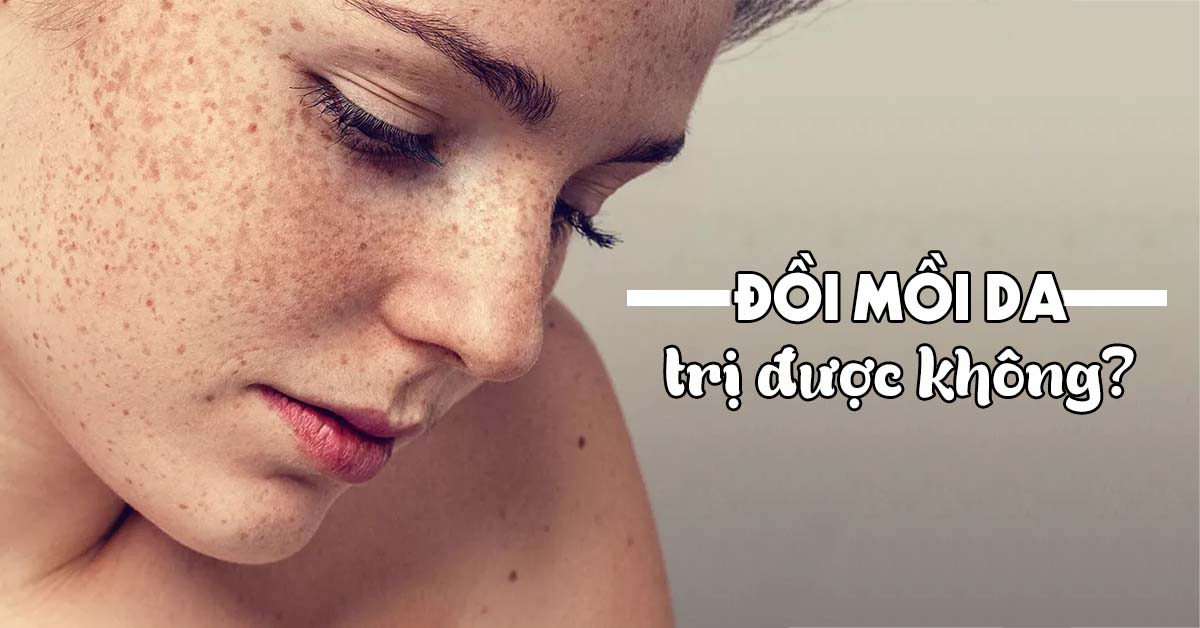 The sample then can be stuck directly onto a slide to look at with a microscope.
The sample then can be stuck directly onto a slide to look at with a microscope.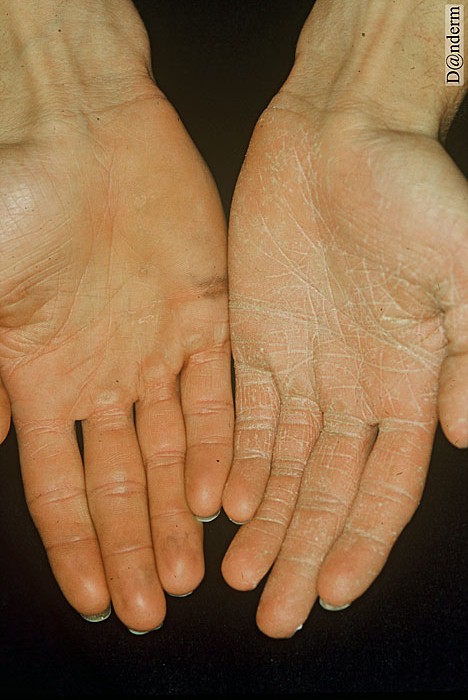 You’ll need a prescription for these medicines. They can have side effects. Your doctor will keep an eye on you while you’re taking antifungal pills.
You’ll need a prescription for these medicines. They can have side effects. Your doctor will keep an eye on you while you’re taking antifungal pills.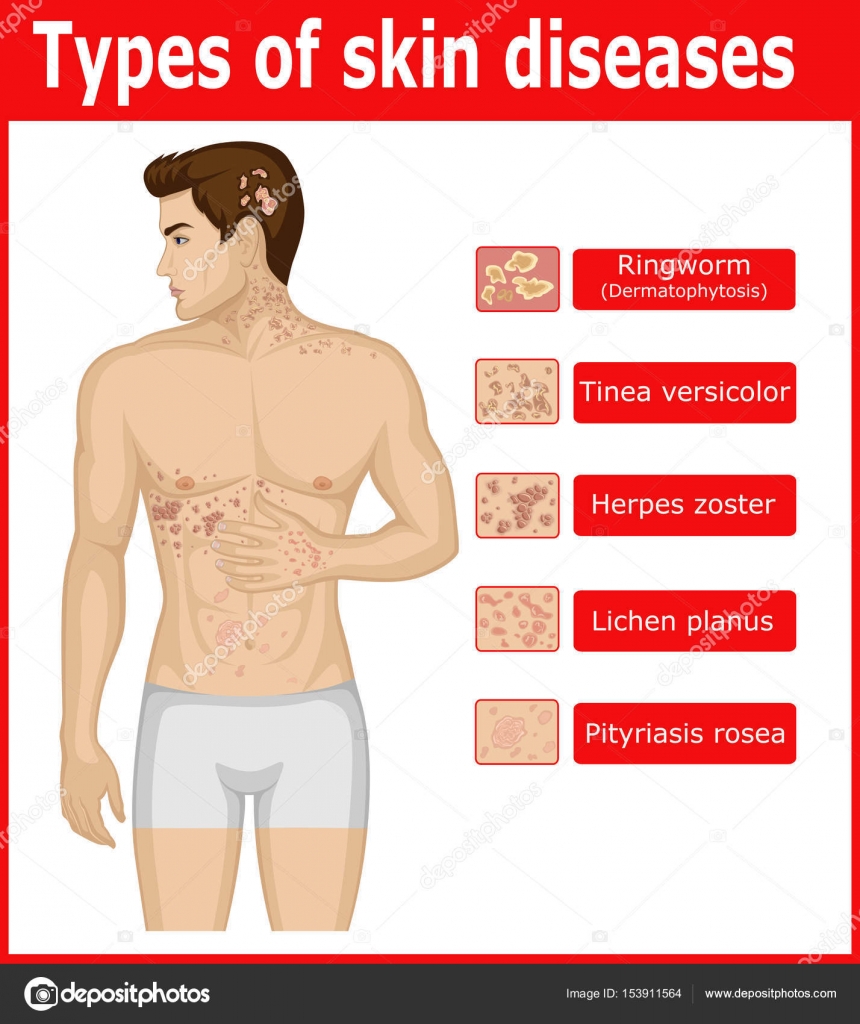


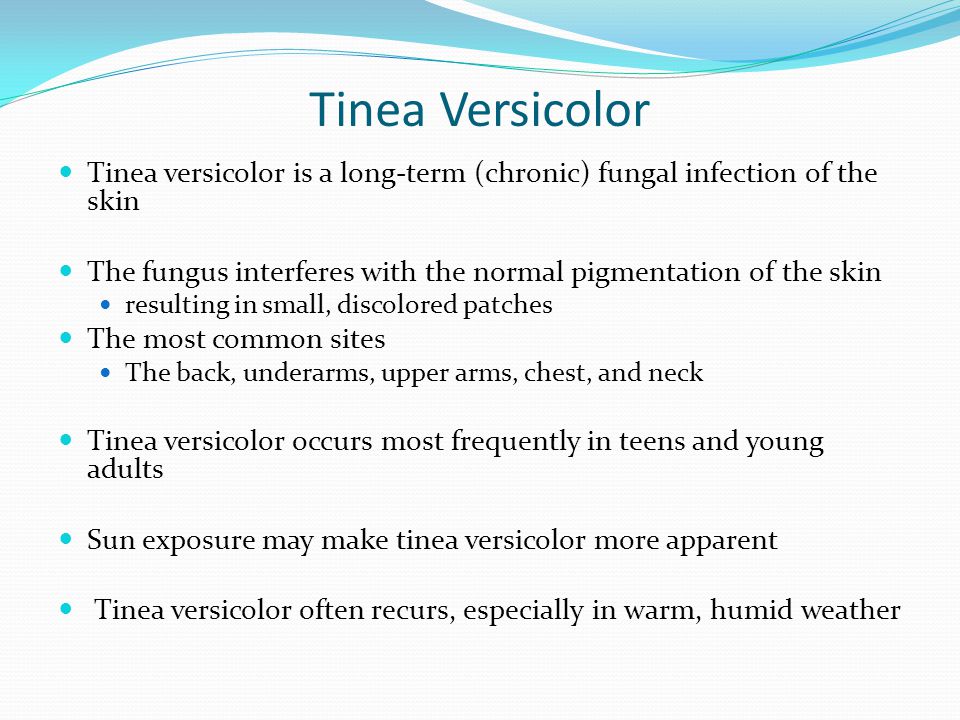 For some people, the skin may darken rather than lighter. This condition is known as hyperpigmentation.
For some people, the skin may darken rather than lighter. This condition is known as hyperpigmentation. It is unknown what is causing this condition. But, like tinea versicolor, it is neither harmful nor infectious.
It is unknown what is causing this condition. But, like tinea versicolor, it is neither harmful nor infectious. However, even after the infection has cleared, your skin may remain discolored for several weeks or months after treatment. Your infection may also return when the weather gets warmer and wetter. If your condition returns, your doctor may prescribe medications once or twice a month to prevent symptoms.
However, even after the infection has cleared, your skin may remain discolored for several weeks or months after treatment. Your infection may also return when the weather gets warmer and wetter. If your condition returns, your doctor may prescribe medications once or twice a month to prevent symptoms.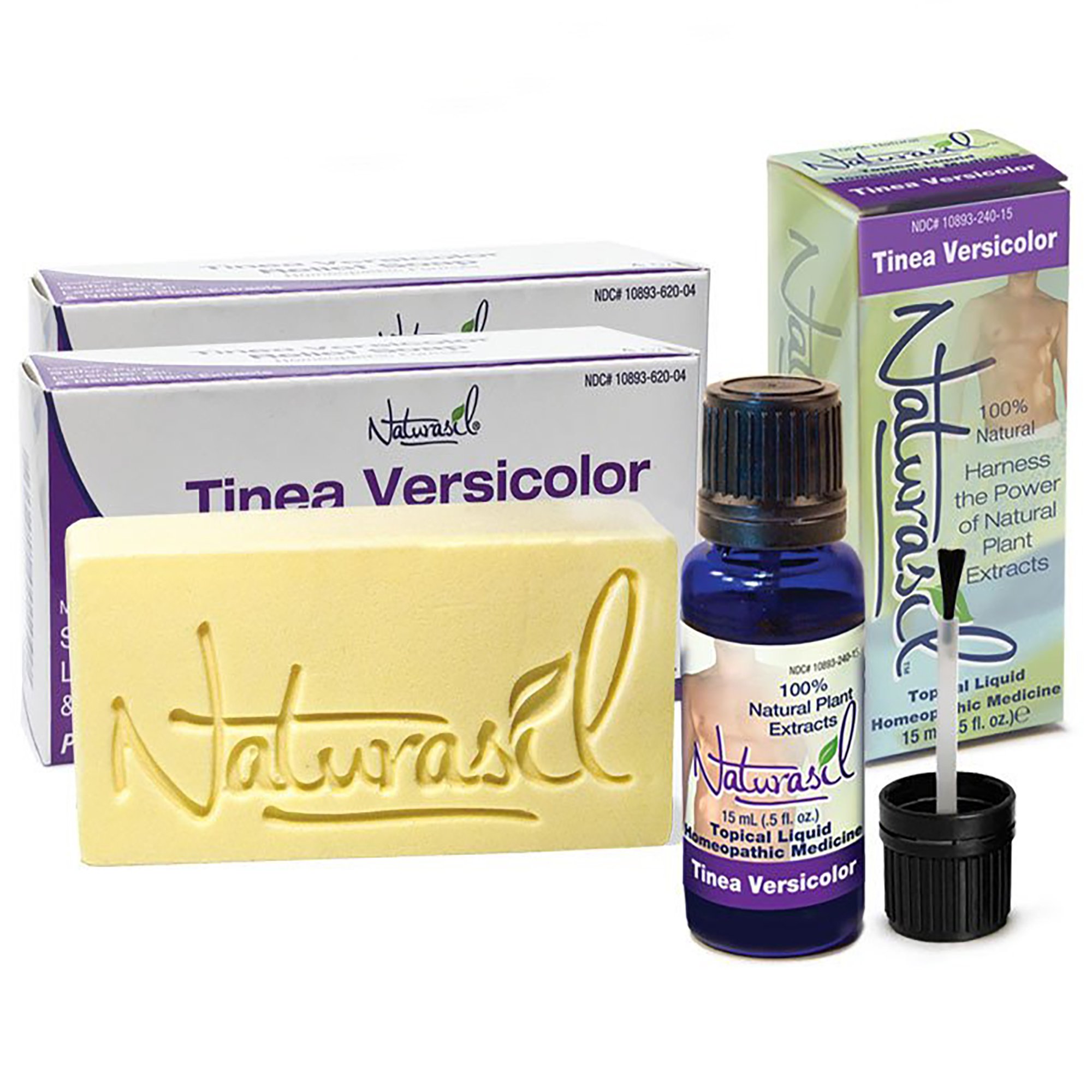
 The inflammation is itchy and itchy. Treatment sometimes lasts for several weeks, and sometimes for a couple of months. Then the color of the skin returns to normal.
The inflammation is itchy and itchy. Treatment sometimes lasts for several weeks, and sometimes for a couple of months. Then the color of the skin returns to normal.